Audemars Piguet
Audemars Piguet Royal Oak Watches: A Women’s World
Audemars Piguet
Audemars Piguet Royal Oak Watches: A Women’s World
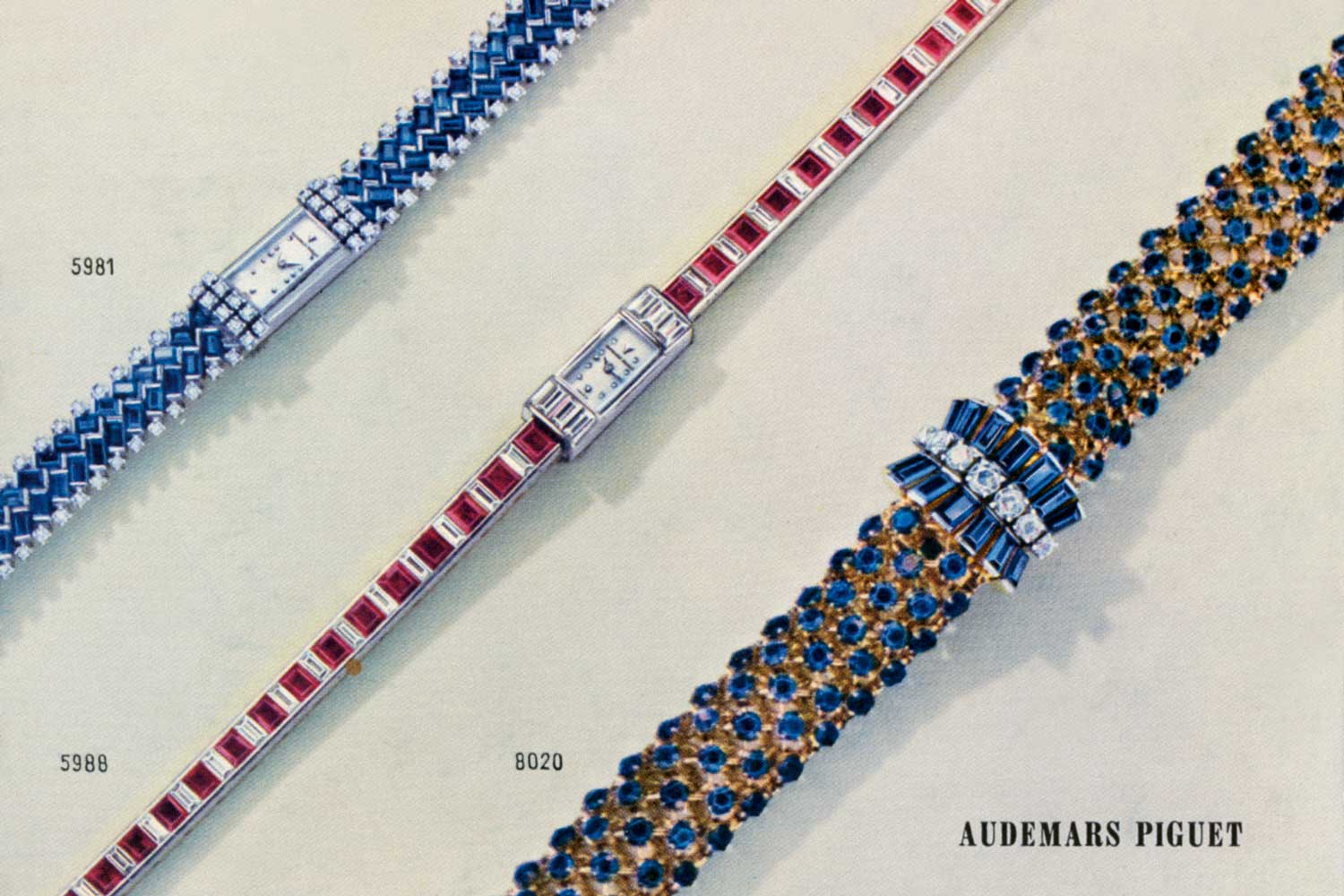
Jewellery watches from the 1960s
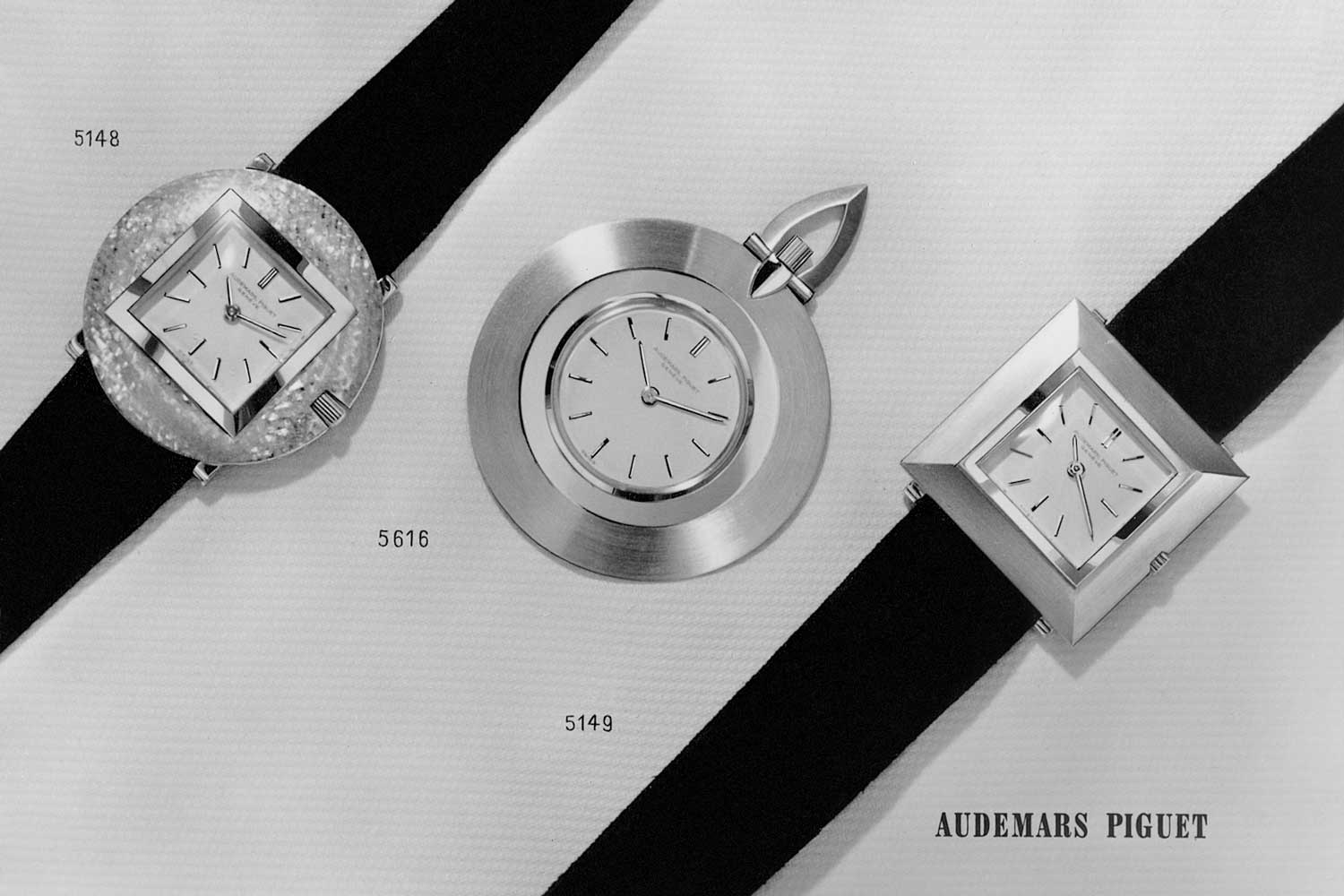
Geometric shapes at the forefront in the 1960s
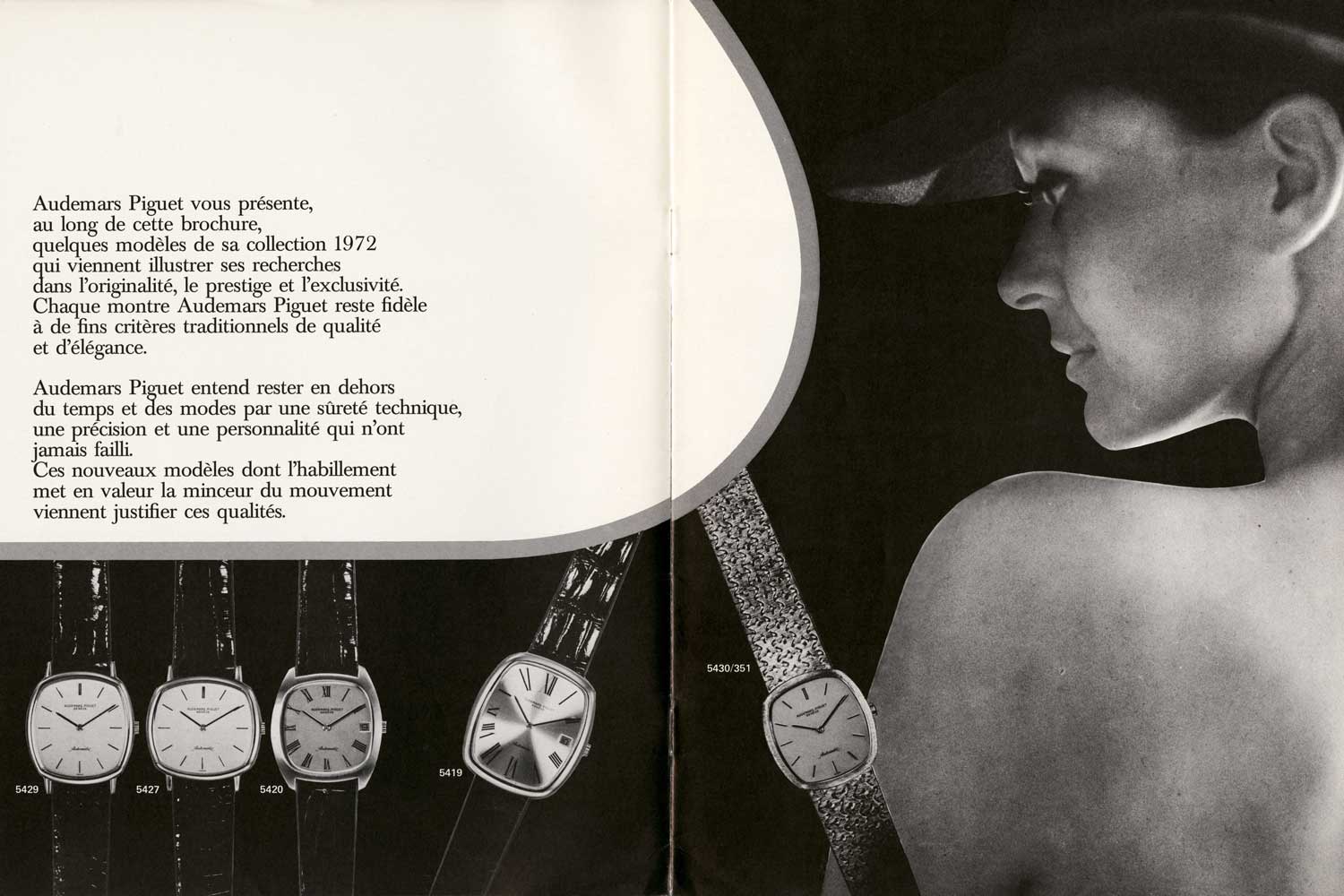
Audemars Piguet brochure from 1972, presenting a collection of cushion shaped watches

A 1972 press image of an elliptical timepiece
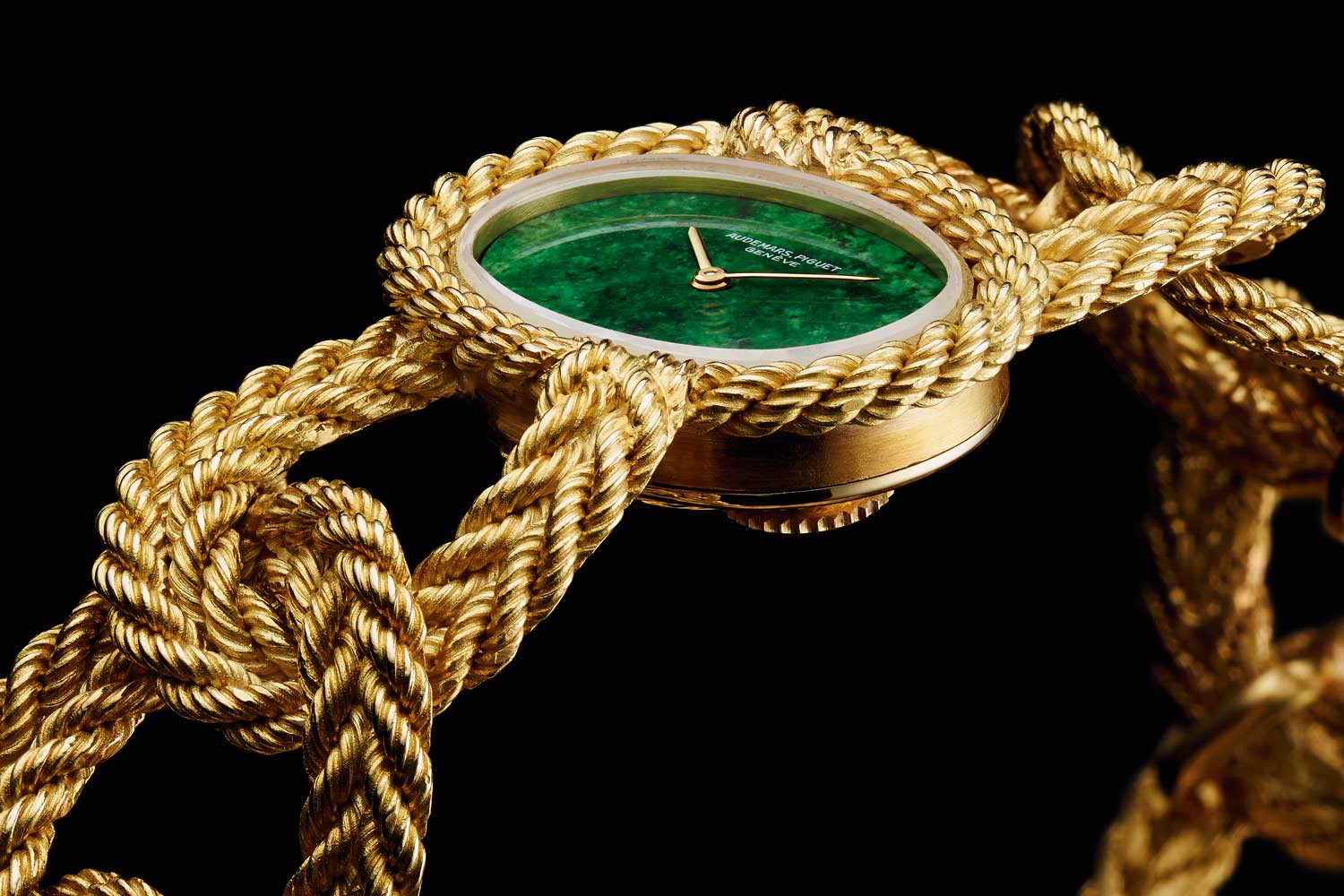
A 1970s elliptical watch with a garnet dial and gold rope bracelet, AP Heritage Collection (Inv. 360)
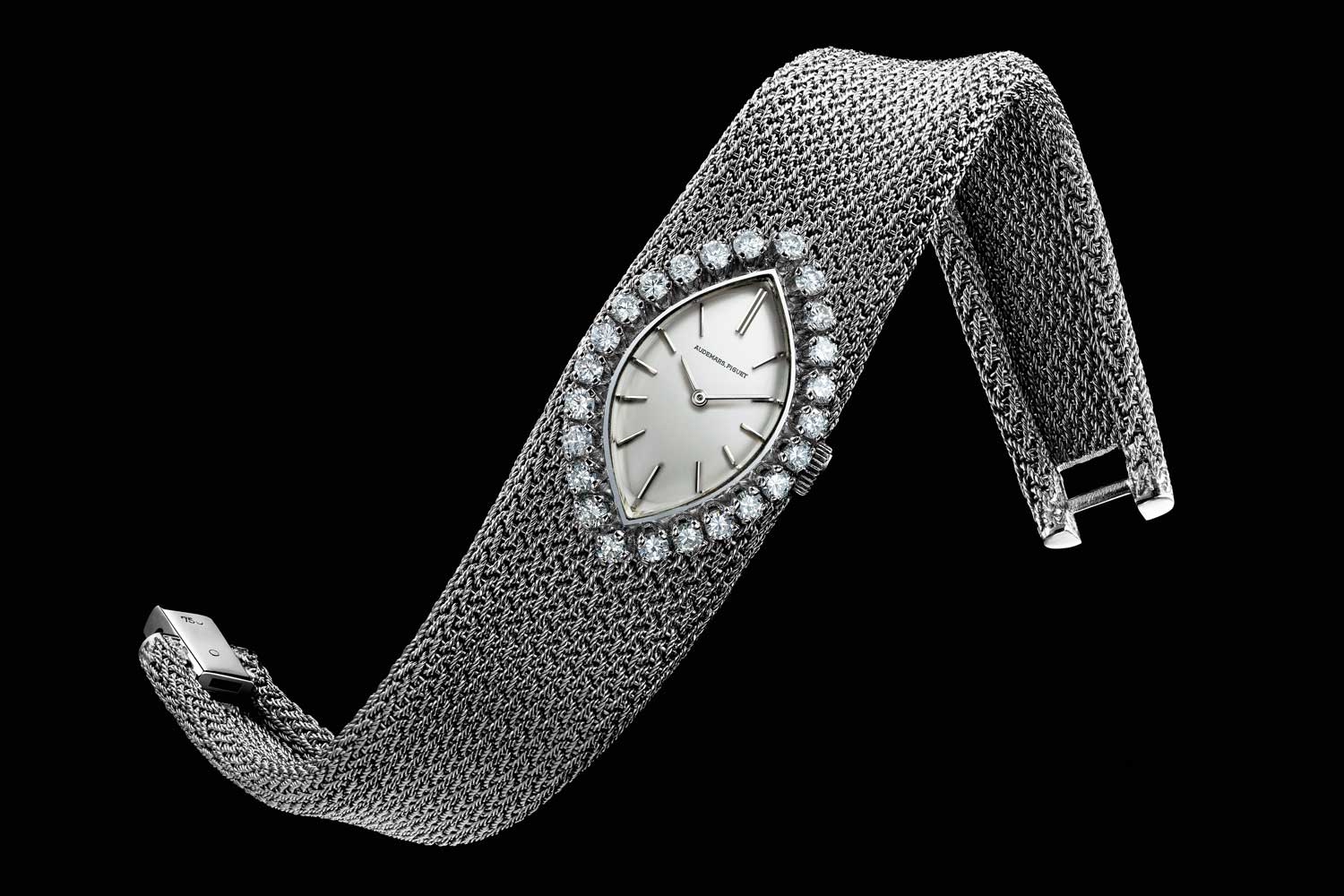
A bracelet watch from the 1970s, AP Heritage Collection (Inv. 542)

Jacqueline Dimier, 2016

Carolina Bucci, 2016

Jasmine Audemars and François-Henry Bennahmias, 2022
A Tapisserie of Time
The idea of the Tapisserie motif that has characterized the Royal Oak’s dial from the outset has, after 50 years of history, gained a beautiful symbolic significance. It’s as if every one of those minute squares is a window into a chapter of the Royal Oak’s history and a reference to the incredible human beings that each had a role in ensuring its enduring longevity. The first square might represent Georges Golay, the second could refer to Gérald Genta, the third to the aforementioned Jacqueline Dimier, and so on. Indeed, every person, including current CEO Bennahmias, who has played a part in patiently guiding this watch through time to enable it to achieve iconic status, can be represented with each square.

Georges Golay, circa 1980

Gérald Genta, circa 2000
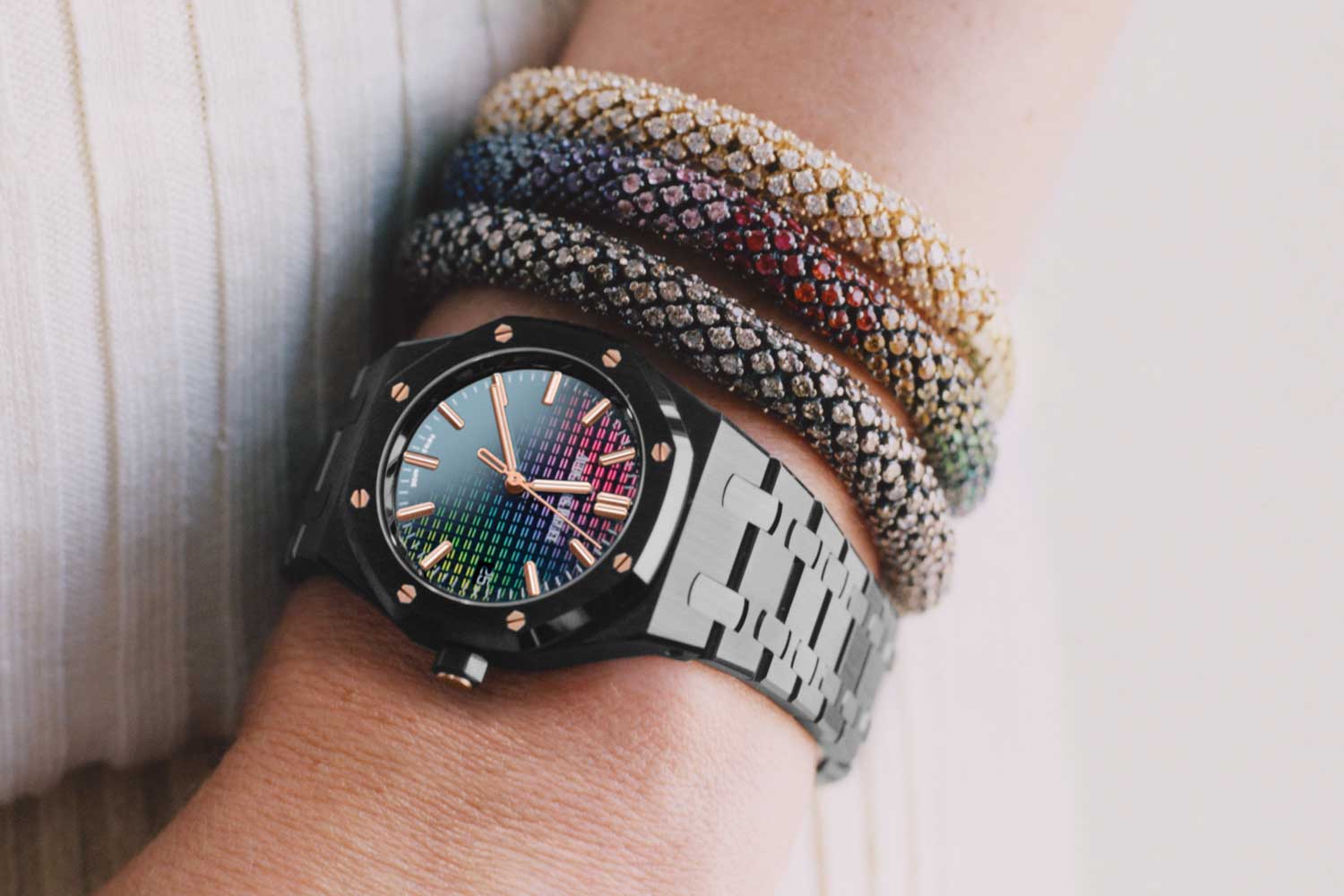
Latest 34 mm Royal Oak Selfwinding Carolina Bucci Limited Edition, Ref. 77350CE.OO.1266CE.02.A
The Carolina Bucci Royal Oak Watches
In many ways, Bucci is the perfect representative of the Royal Oak woman — independent, innovative and fearless. She was born into the jewelry craft. Her great-grandfather Ferdinando opened a workshop in Florence that specialized in the repair of pocket watches. He soon became an expert in the creation of gold chains used to accessorize these timepieces. Her grandfather and father transformed the family business into one of Florence’s most successful jewelers. But it was her inventiveness with pieces such as “Woven” — shimmering objects that used a centuries-old Florentine textile looming technique to weave precious metal — that brought her family global acclaim. The most recent version of her Woven jewelry is called Color Field and allows customers the opportunity to personalize a gem-set tapestry in diamonds and colored sapphires. Bucci, in other words, is something of a master of nuance and detail.
Audemars Piguet’s collaboration with Carolina Bucci came about like many of the brand’s most successful partnerships — and that is, by an encounter. She recalls being seated next to Audemars Piguet’s CEO Bennahmias during a lunch when he noticed she was wearing a mid-size Royal Oak from the 1980s. He asked why she wasn’t wearing a more modern version, and she replied that she hadn’t found a modern Royal Oak that “spoke to her.” With his typical aplomb, he immediately suggested that she should then design a watch that would indeed resonate with her. His exact words were, “I dare you to come up with your own design.”
What is extraordinary about Bucci’s initial work on the Royal Oak is her radical transformation of its appearance using the most deft and subtle of touches. Reworking the surface of the iconic timepiece with her signature “hammered” Florentine Finish means she neither added nor subtracted any material from the Royal Oak. She explains, “When I create a piece of jewelry, I always look at it from two perspectives — from that of the person wearing it and also of the person observing it being worn. Based on that, I realized that the way light reflects off a surface is one of the greatest influences on human perception. It can create intrigue for the senses and arouse the mind. It can visually seduce and compel one in for a closer look. This was the effect that I was after with the Florentine Finish.”
Bucci worked with Audemars Piguet and its team of expert craftsmen to adapt the soft, microscopically nuanced, pointillist technique to the very specific requirements of high horology and specifically, the Royal Oak’s unique geometry. The resulting Frosted Gold effect proved stunning — the repetitive hammering with diamond-tipped tools on the surface of the gold served to heighten and enhance the signature lines of the Royal Oak.
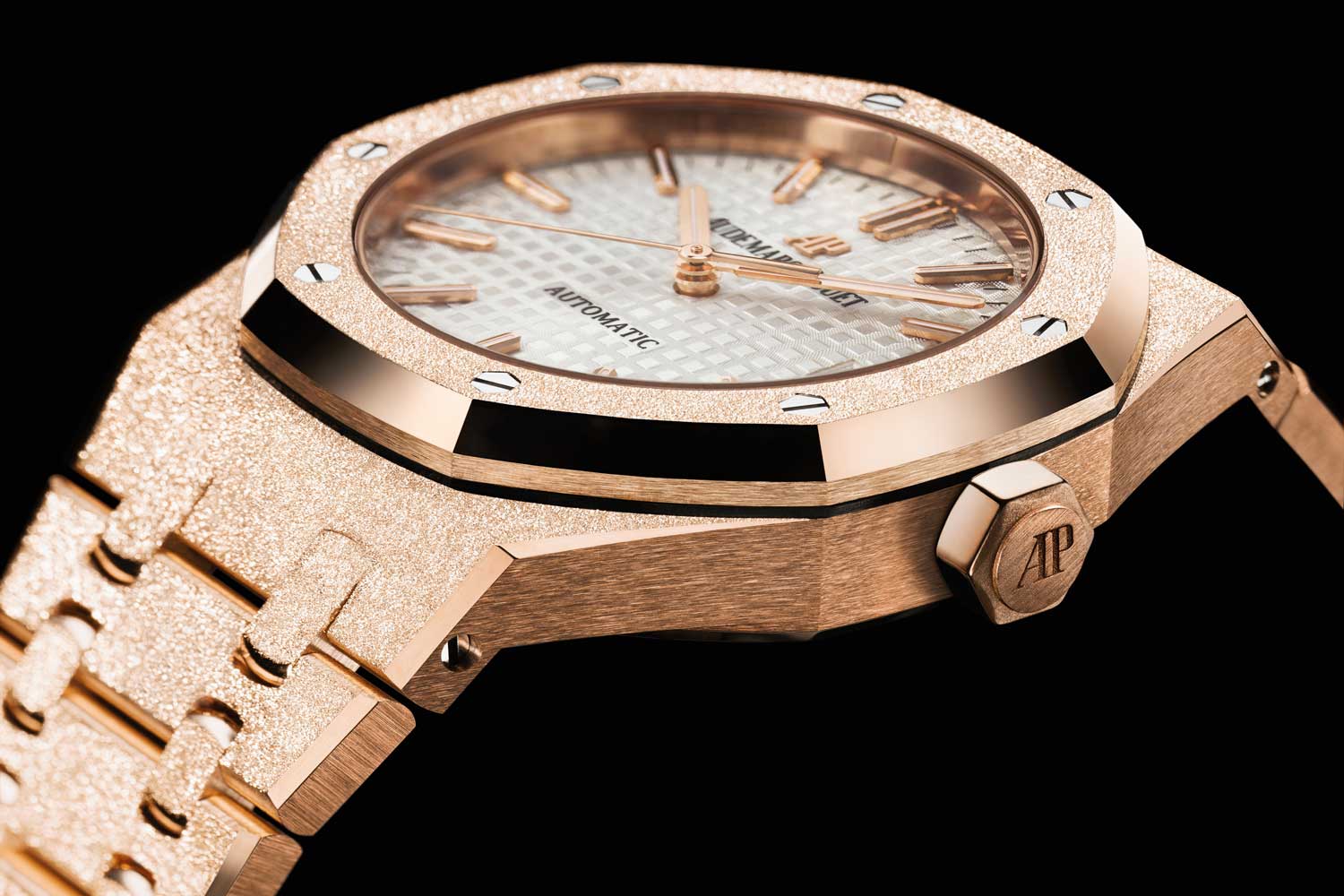
The 37mm Carolina Bucci Royal Oak Frosted Gold, released in 2016
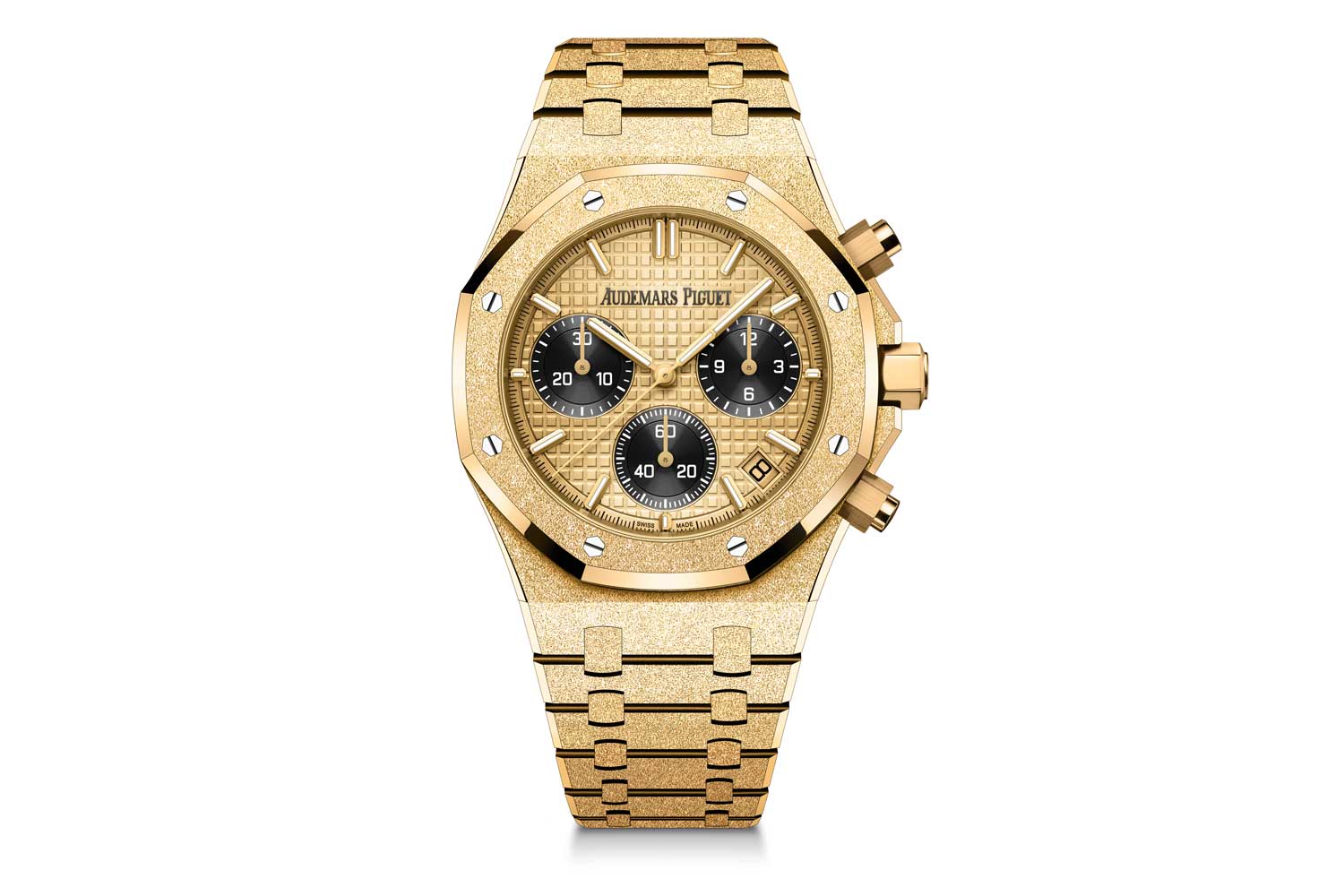
Royal Oak Chronograph Ref. 26240BA Frosted Gold, 2021
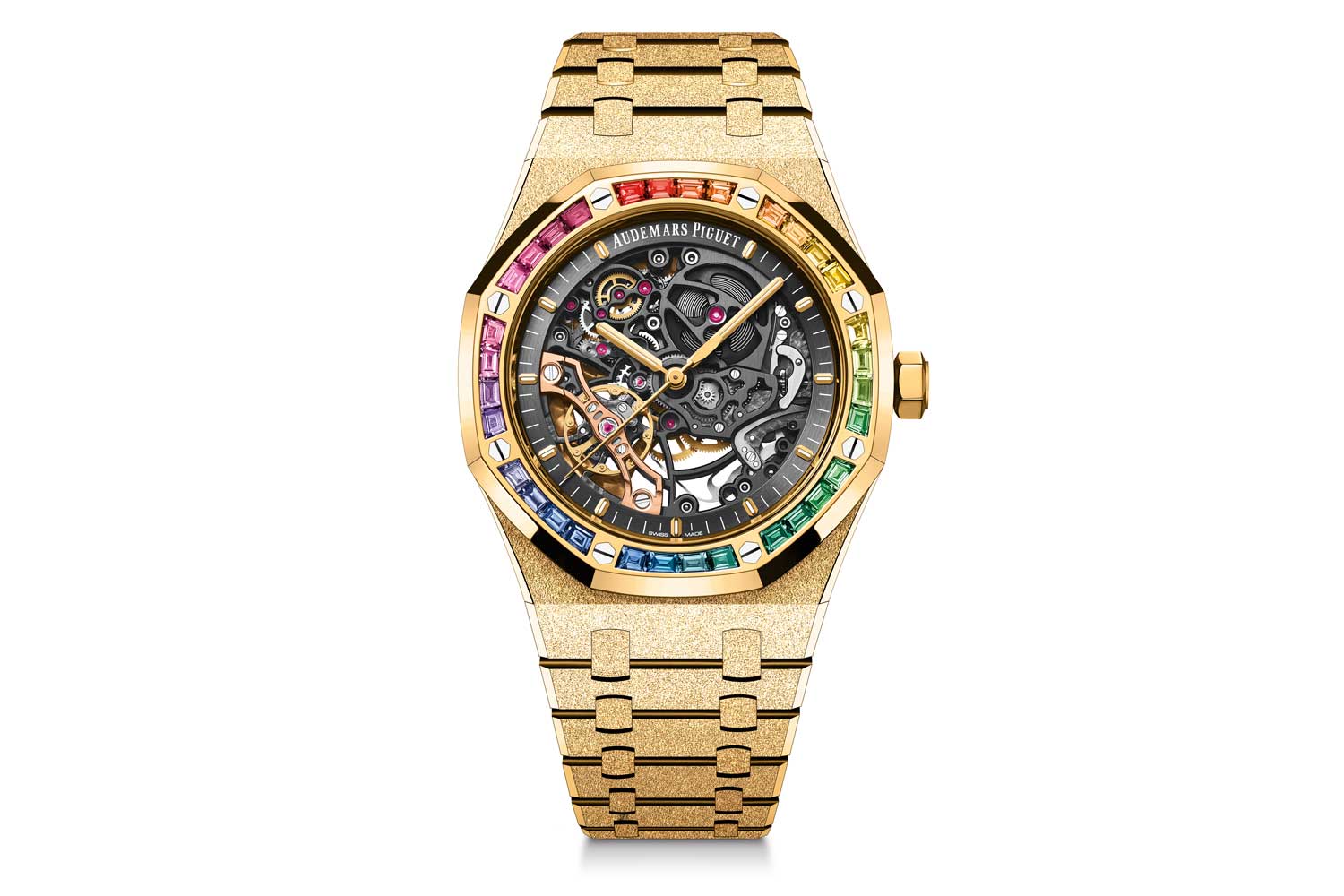
Royal Oak Frosted Gold Double Balance Wheel Openworked Ref. 15412BA, 2021
“With the first Frosted Gold design, I took the perfection of the Royal Oak case and bracelet and ‘roughed them up’ a little, juxtaposing the perfectly imperfect Florentine finish with Swiss watchmaking precision. Now I’m doing the opposite, taking the textured surface of the ‘Tapisserie’ dial and flattening it out into a perfectly smooth mirror,” Bucci explains. “The motive for both is to create something interesting and unpredictable. It’s a fresh take on an icon made in the image of a contemporary woman. I know women with a great eye for keynote accessories who are going to love this. The mirror is always interacting with its environment, ever-changing according to what clothes you’re wearing, the décor of the room, the lighting, the time of day, the weather.”
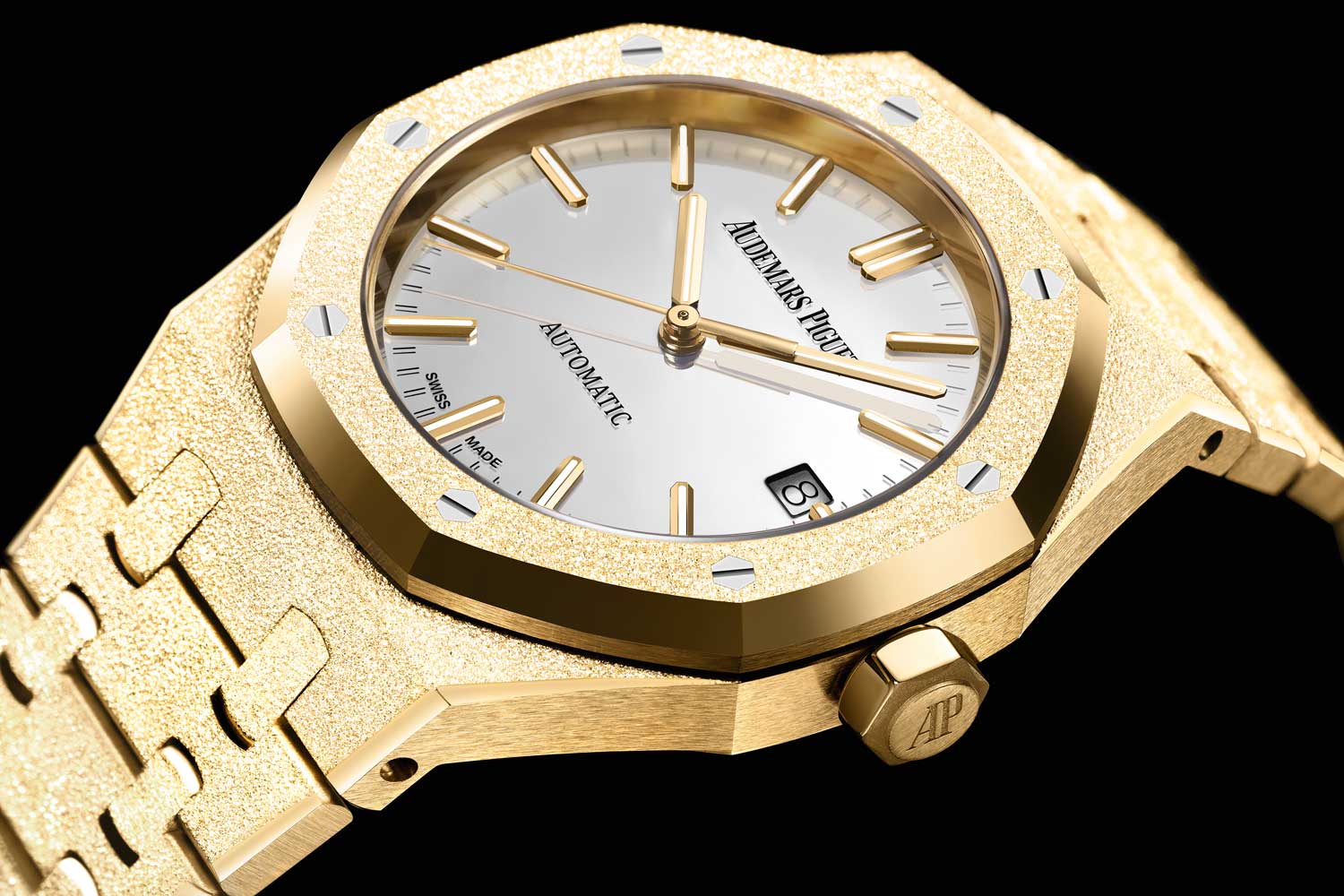
In 2018, a second Frosted Gold Royal Oak was released in yellow gold with a mirror-polished silvered dial.
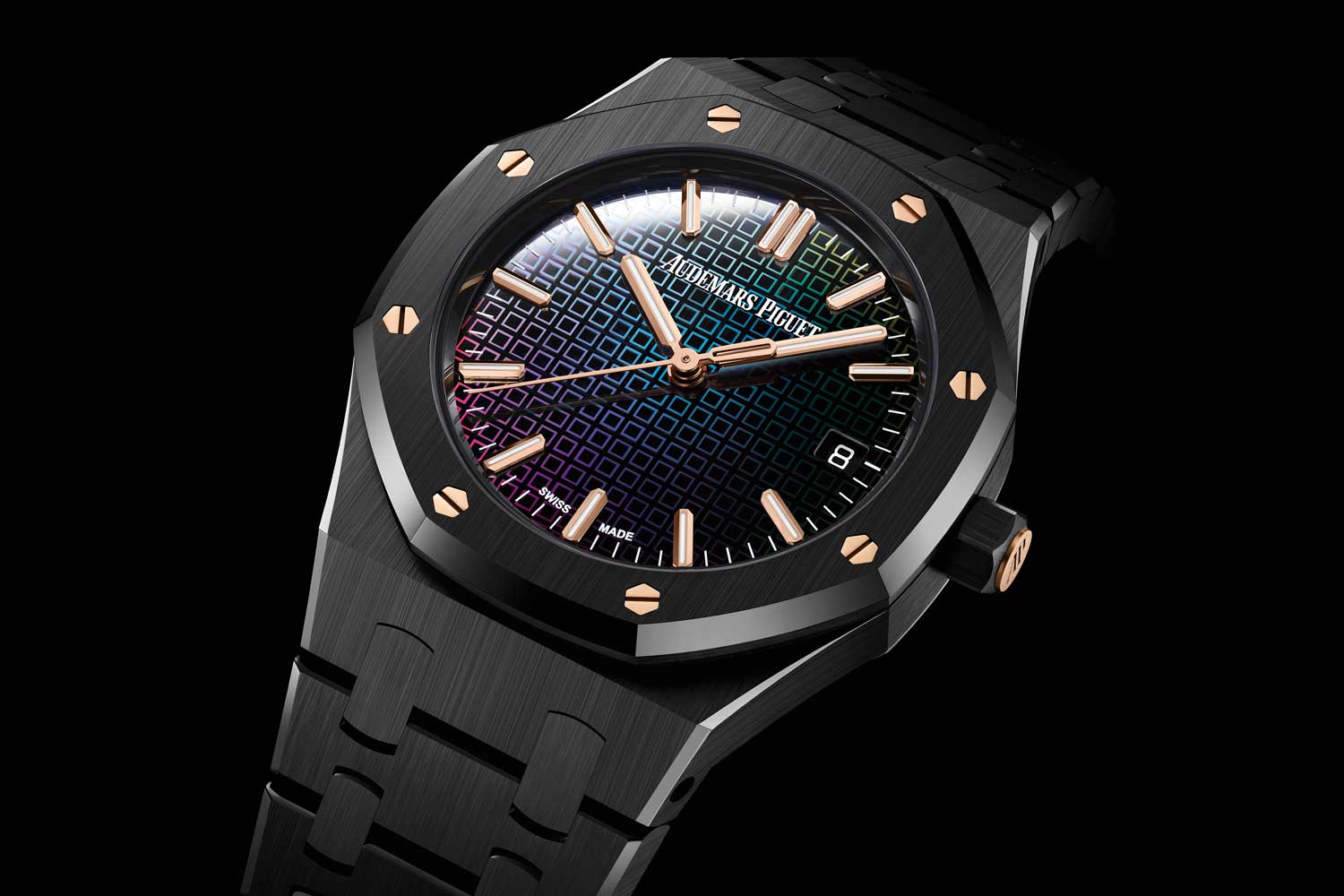
Carolina Bucci’s latest limited edition Royal Oak in stunning black ceramic case paired with a dynamic multicolour prism of a dial
The Design Language of Jacqueline Dimier
But if Carolina Bucci and the watches she’s created are represented by the last squares in the dial of the Royal Oak’s Tapisserie motif, then who do the other squares in this mesmerizing pattern represent? In order to understand this, we need to transport ourselves back to 1976 and get to know a truly extraordinary woman named Jacqueline Dimier. Clearly, Georges Golay, Audemars Piguet’s then CEO, the man who commissioned the Royal Oak from Gérald Genta, and who ordered the women’s version of the watch, was impressed by Dimier. So much so that in 1975, one year before the ladies’ Royal Oak launched, he appointed her creative director of the brand. Her work at the manufacture would become legendary. Amongst the litany of her achievements are the designs of the incredible ultra-thin perpetual calendar reference 5548 in 1978, which truly transformed Audemars Piguet’s fortunes, the Royal Oak Perpetual Calendar in 1984 and the world’s first wristwatch tourbillon in 1986.
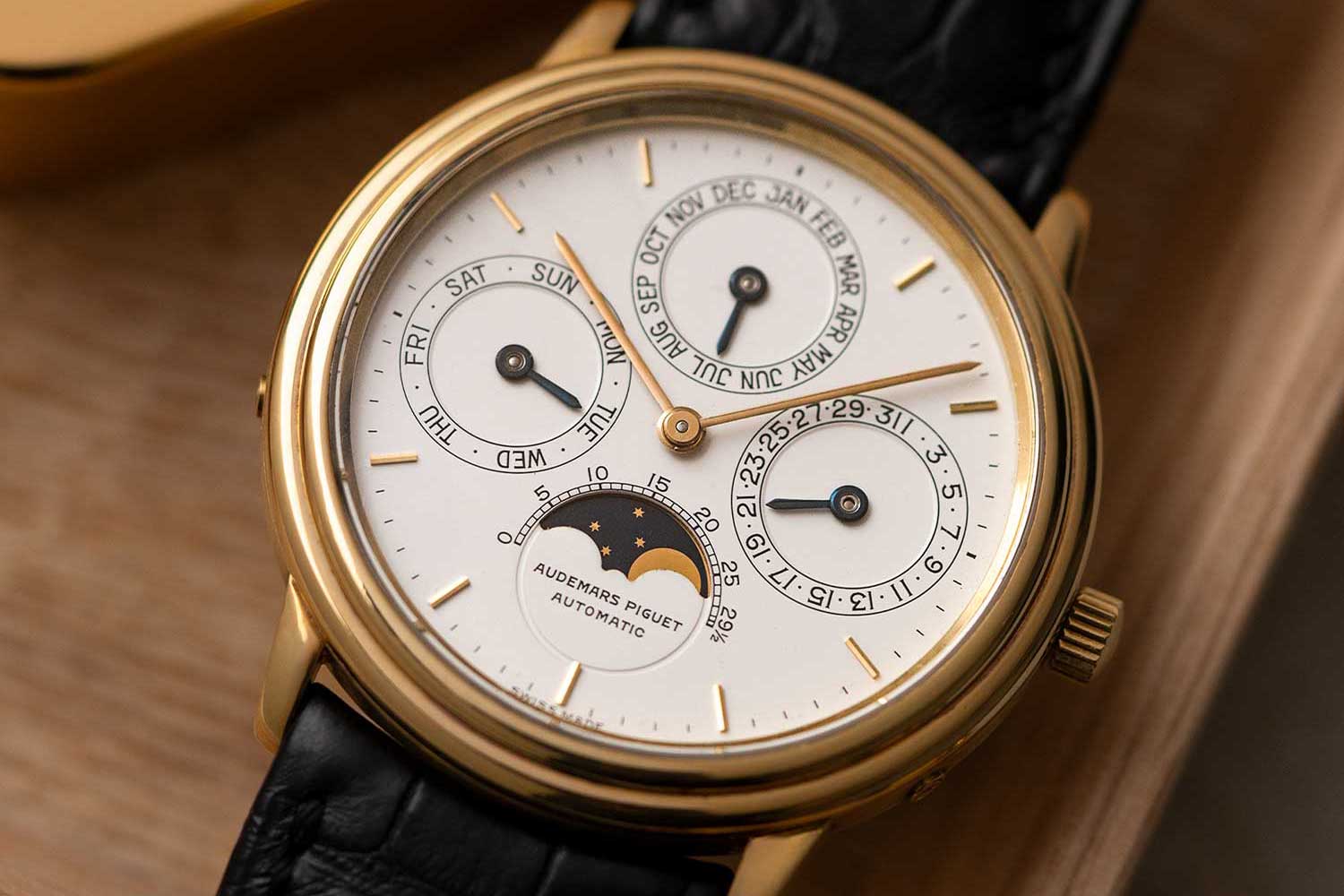
The incredible ultra-thin perpetual calendar reference 5548 in 1978
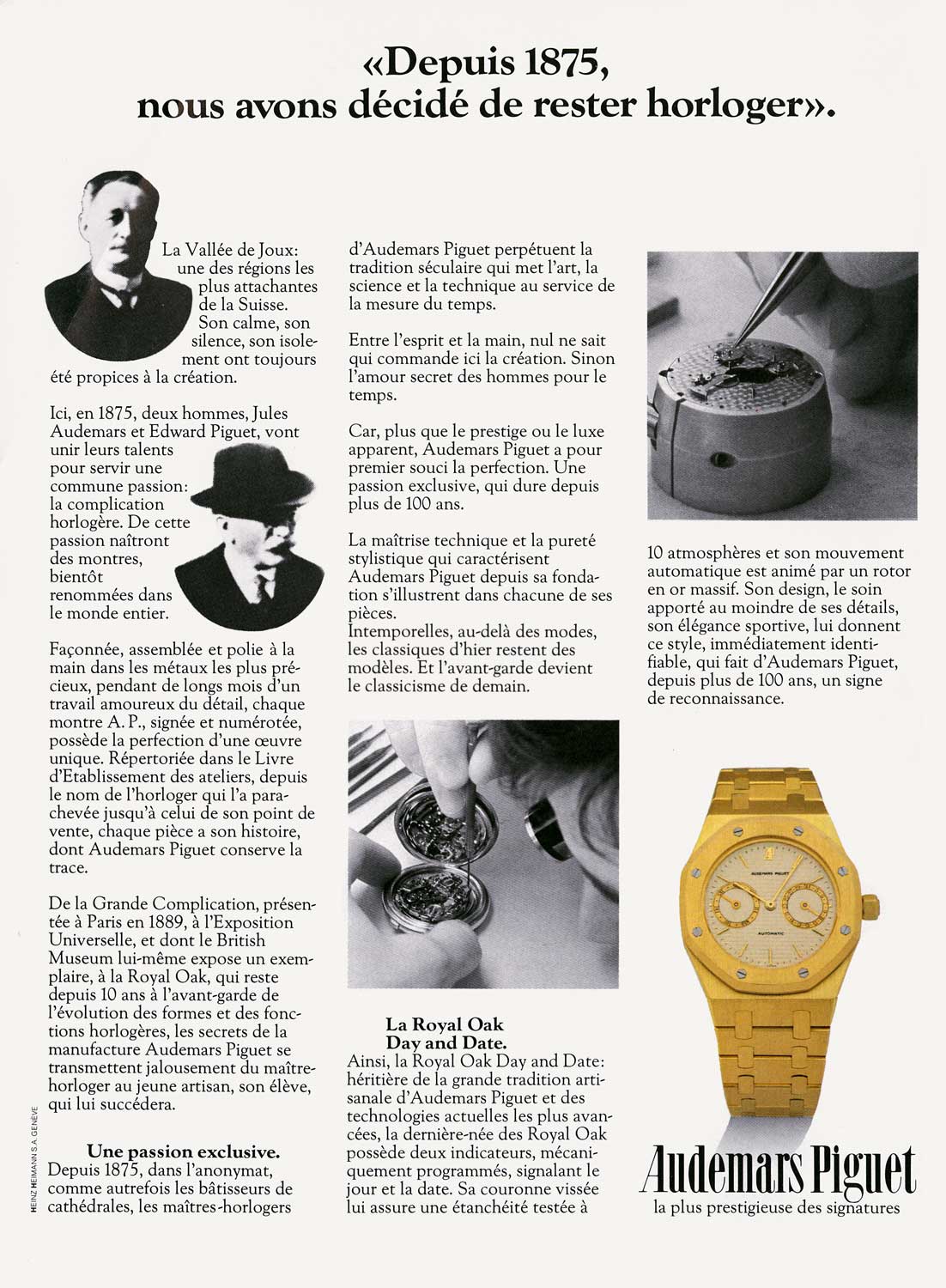
A 1984 advertisement titled, “Since 1875 we have decided to remain watchmakers”, showcasing the midsize Royal Oak Day Date ref. 25572BA
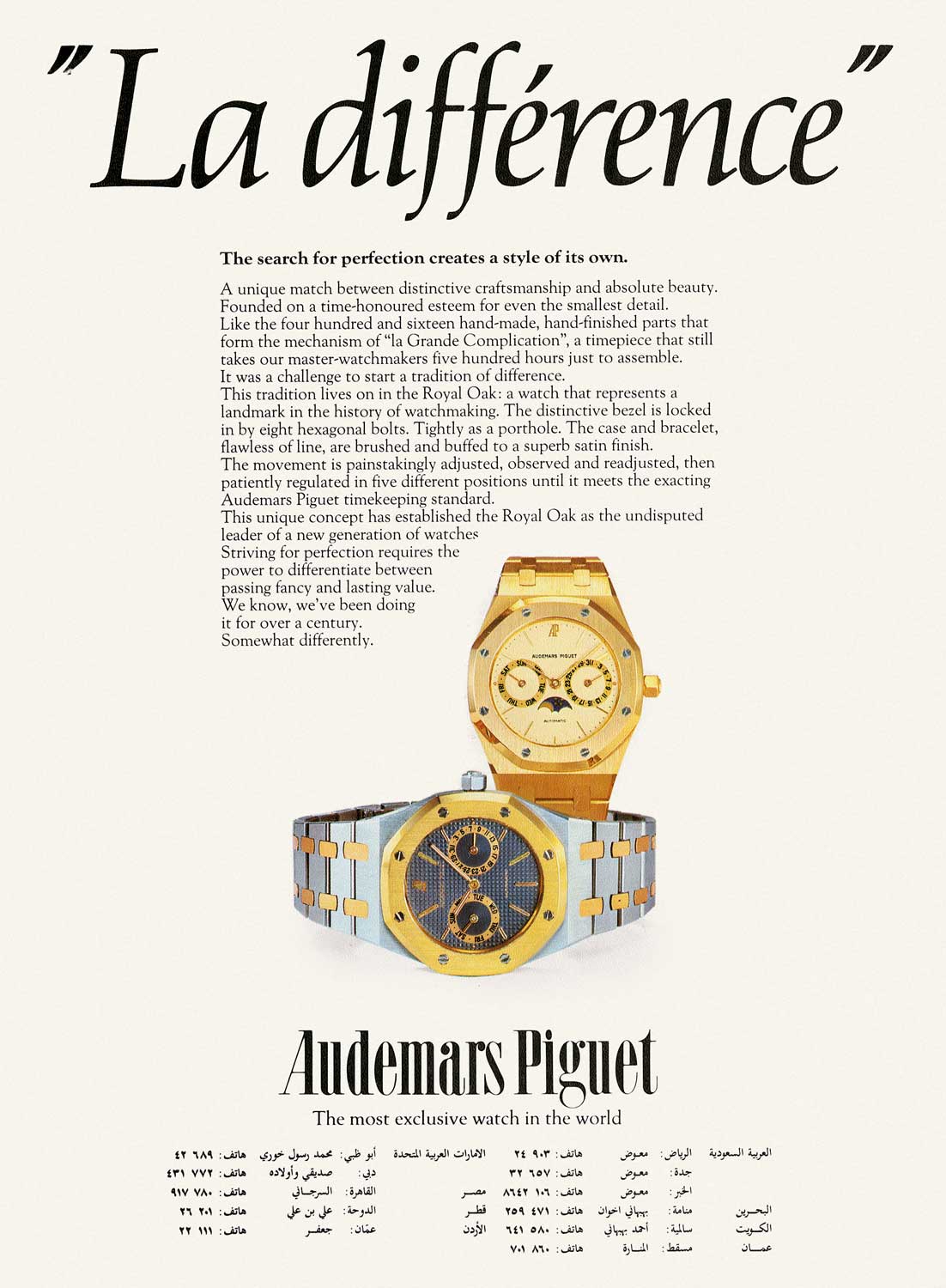
A Royal Oak advertisement from 1985 with the Day Date ref. 25572SA and Day Date Moonphase ref. 25594BA
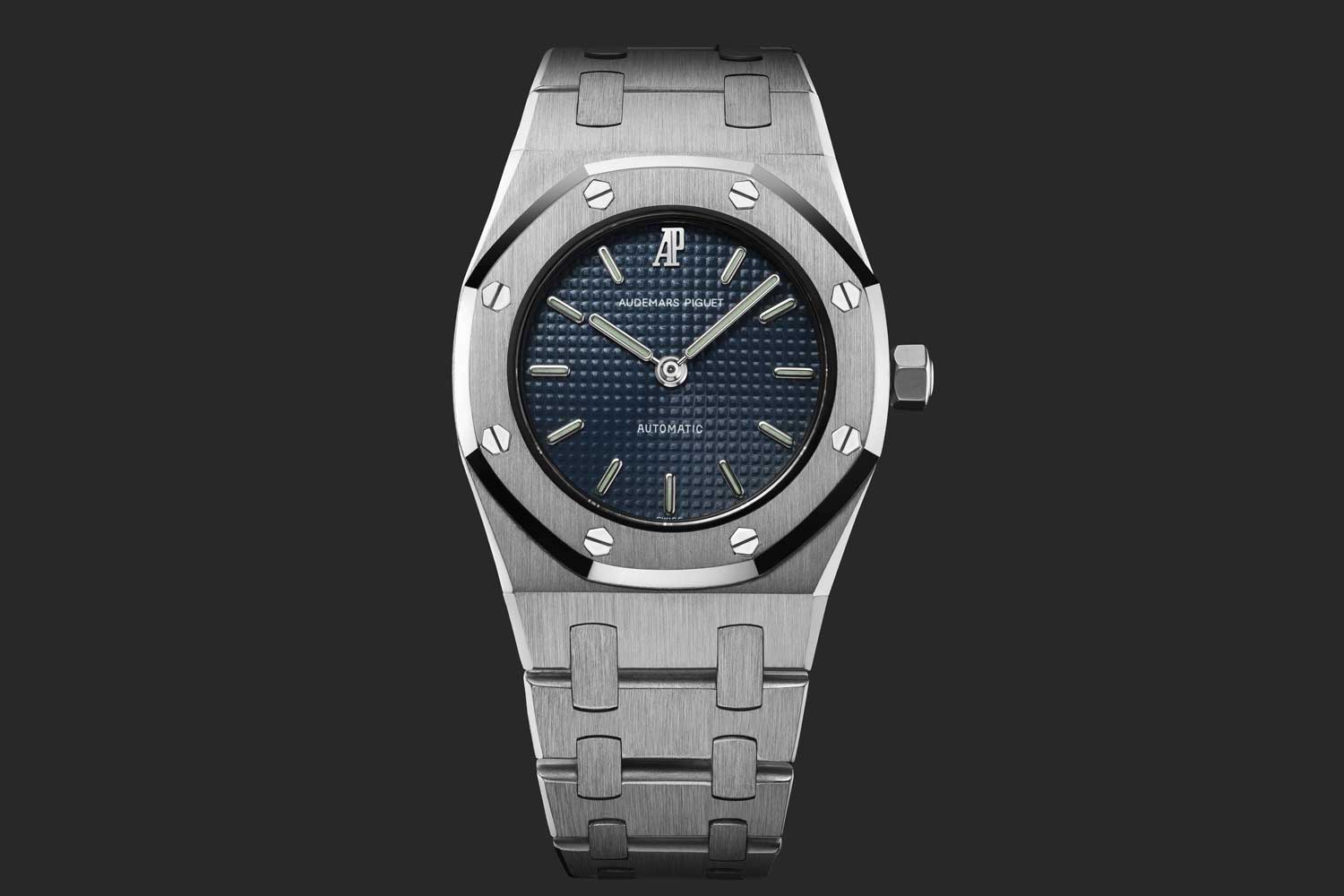
First Royal Oak for women, Ref. 8638, AP Heritage Collection 1871
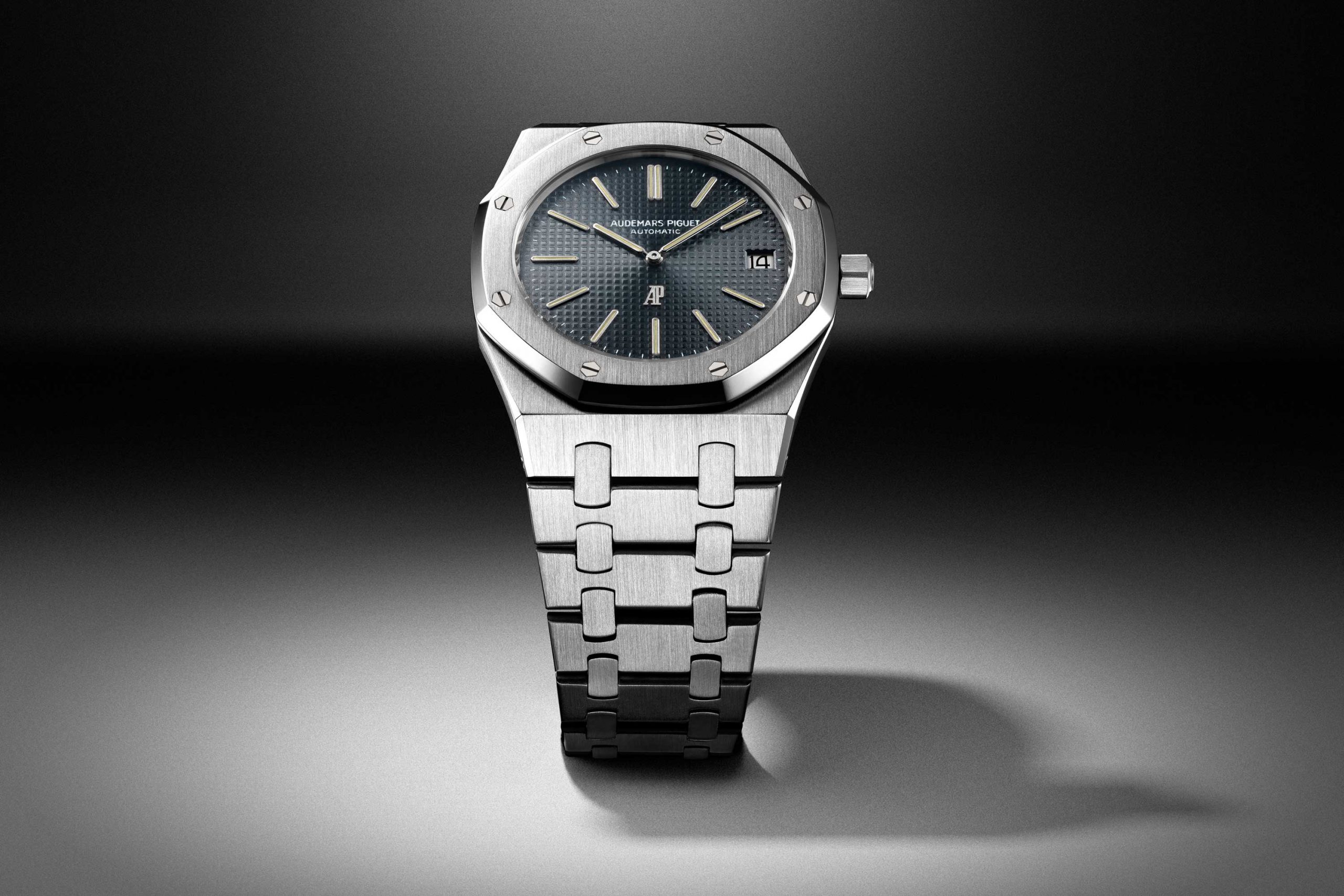
The 1972 Audemars Piguet Royal Oak Ref. 5402ST; the instance pictured here is case no. A 26 and part of the AP Heritage Collection (Inv. 365)
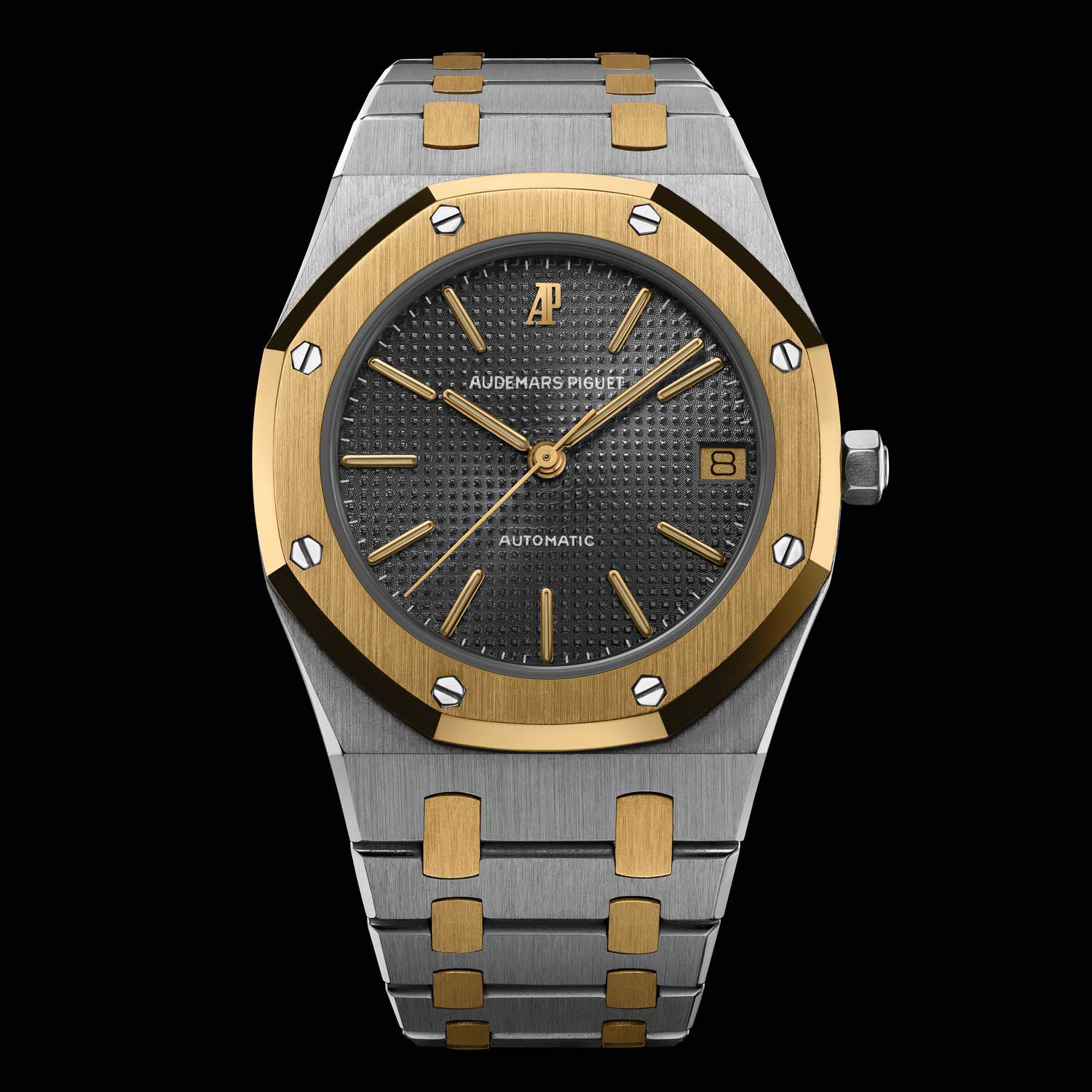
Royal Oak III, Ref. 4100SA, AP Heritage Collection (Inv. 1163)
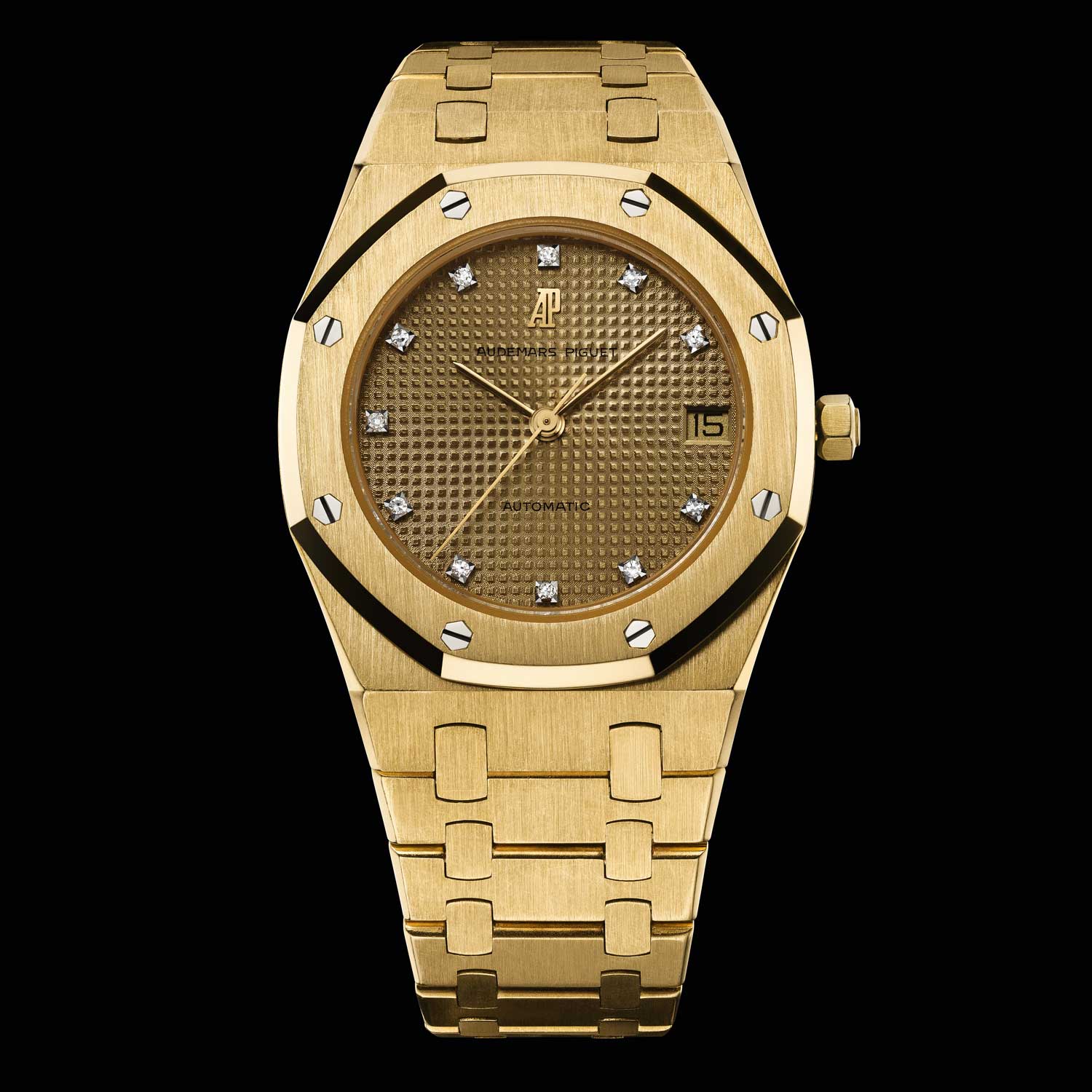
Royal Oak III, Ref. 4100BA, AP Heritage Collection (Inv. 881)
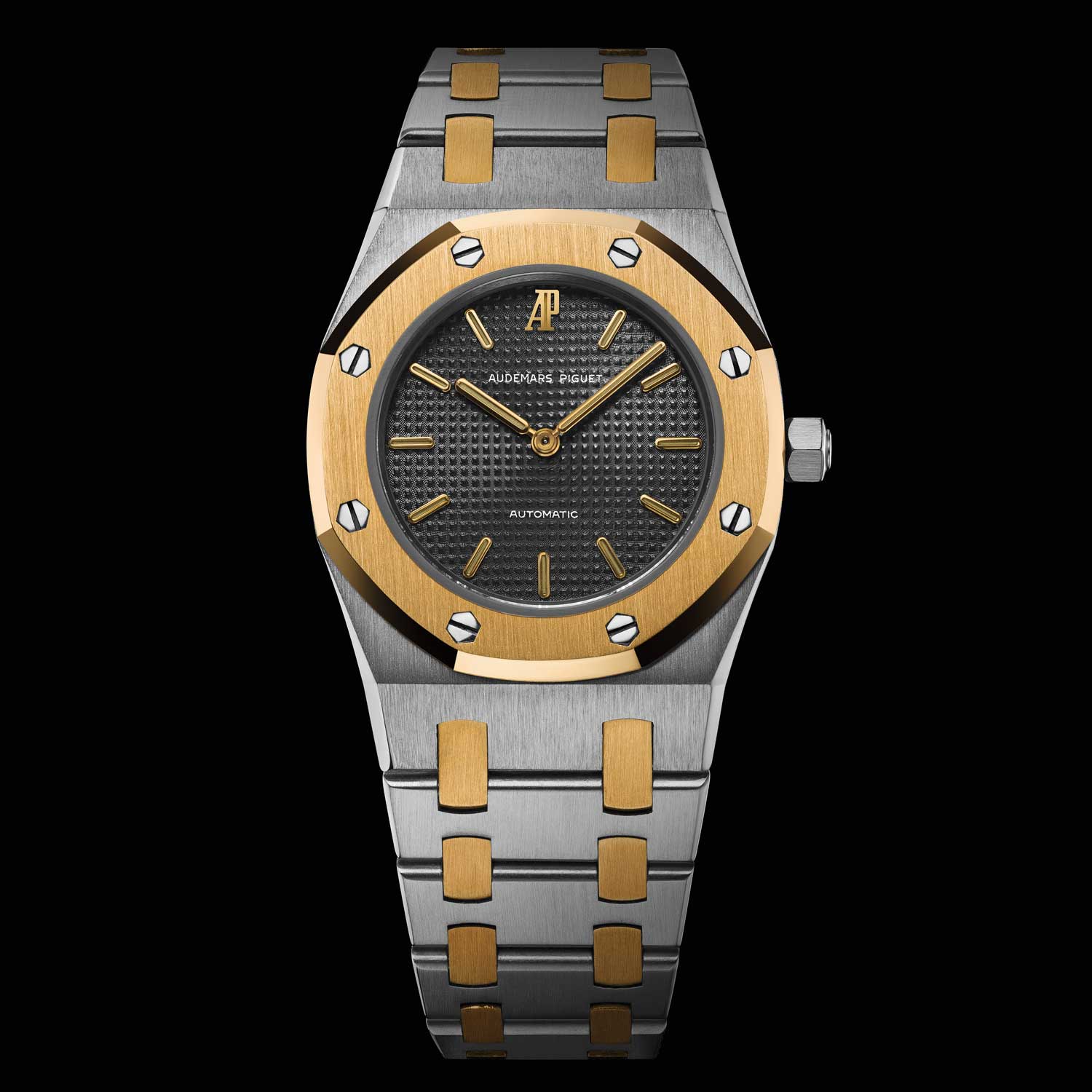
Royal Oak Ladies’ Watch, Ref. 8638SA, AP Heritage Collection (Inv. 381)
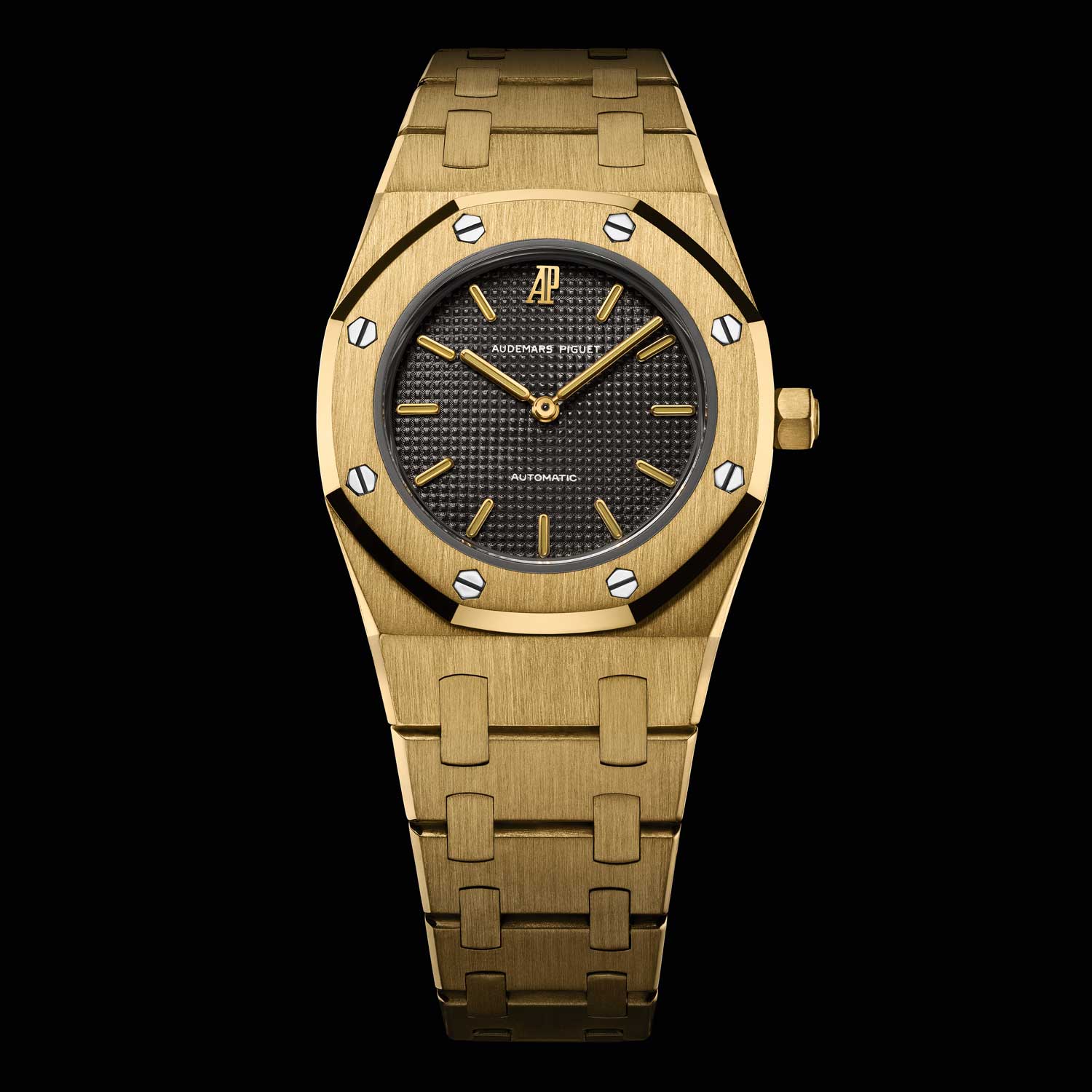
Royal Oak Ladies’ Watch, Ref. 8638BA, AP Heritage Collection (Inv. 1873)
Looking at Dimier’s design heritage today across the Royal Oak’s feminine collection, you can see the myriad expressions that subtle differences in dimensions play. There is, as the successor to Dimier’s original 8638, the 33 mm in diameter quartz-driven Royal Oak, which epitomizes classic femininity. There is also the 1997 quartz-driven Royal Oak mini with its impressive 20 mm in diameter, which took this play with dimensions to new extreme, continuing the company’s strong legacy of miniaturisation.
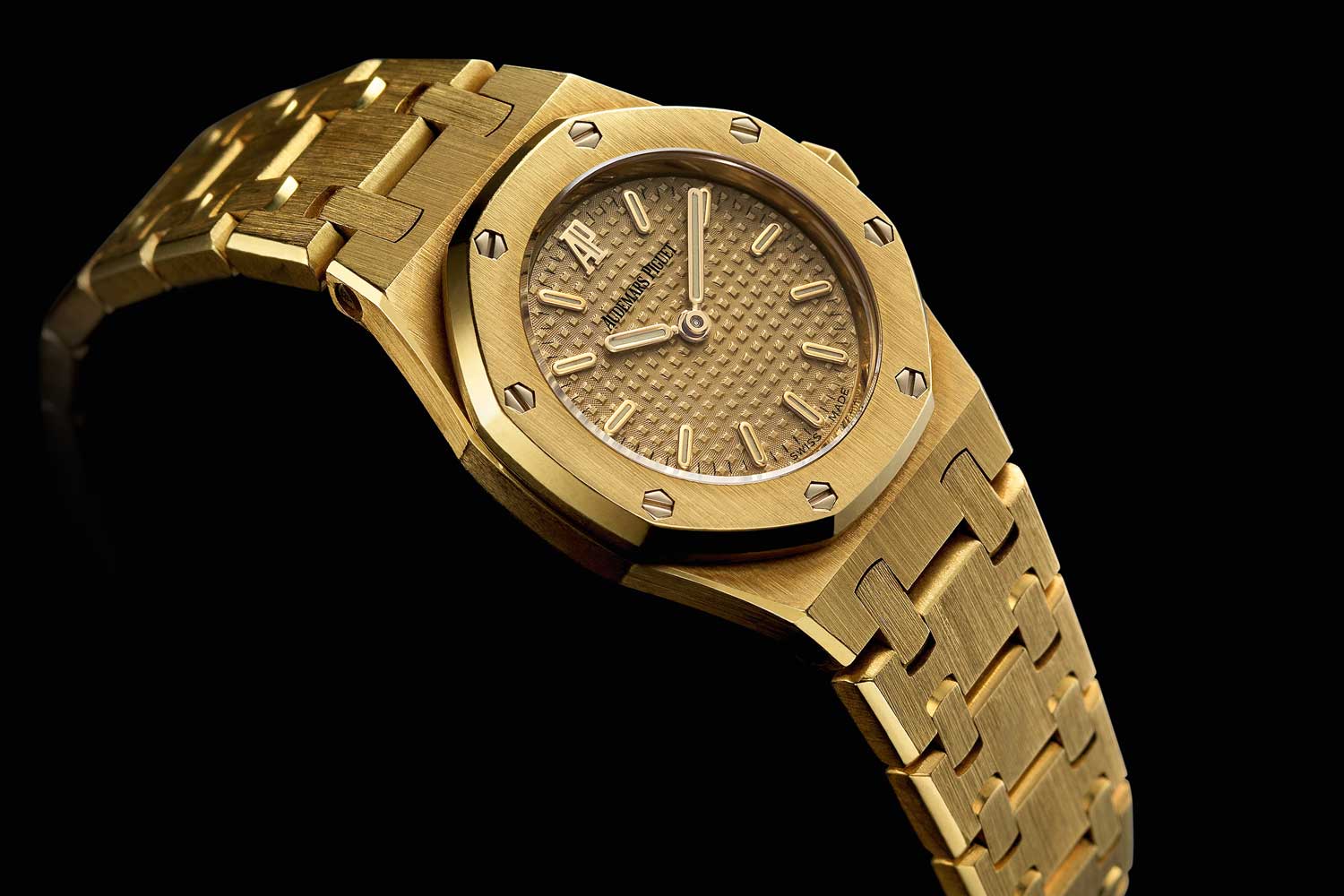
The 1997 Royal Oak mini with just 20 mm in diameter, Ref. 67075BA, AP Heritage Collection (Inv. 595)
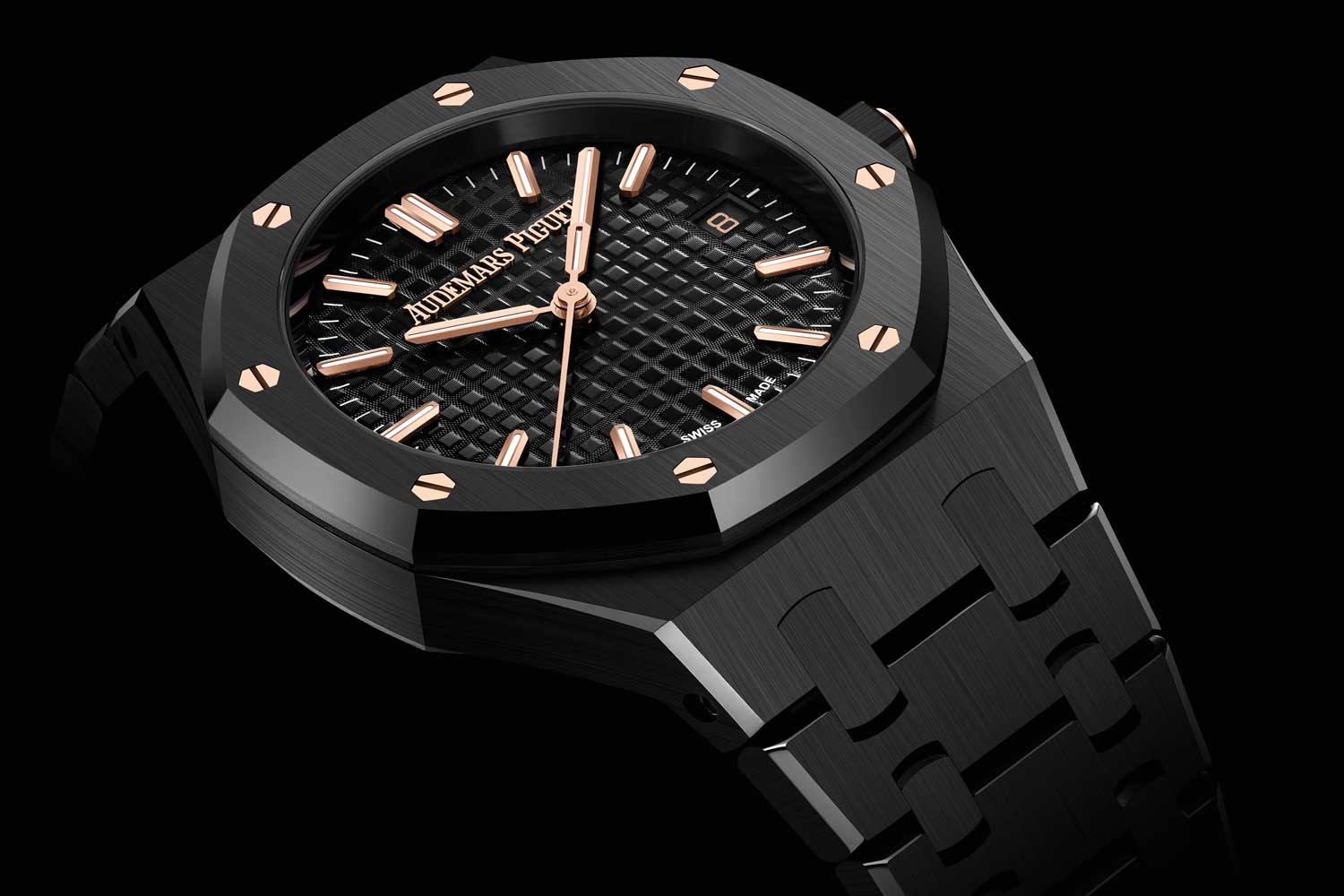
Royal Oak Selfwinding 34 mm Ref. 77350CE, 2021

Royal Oak Frosted Gold Selfwinding 34 mm with an ice blue dial Ref. 77353BC, 2021
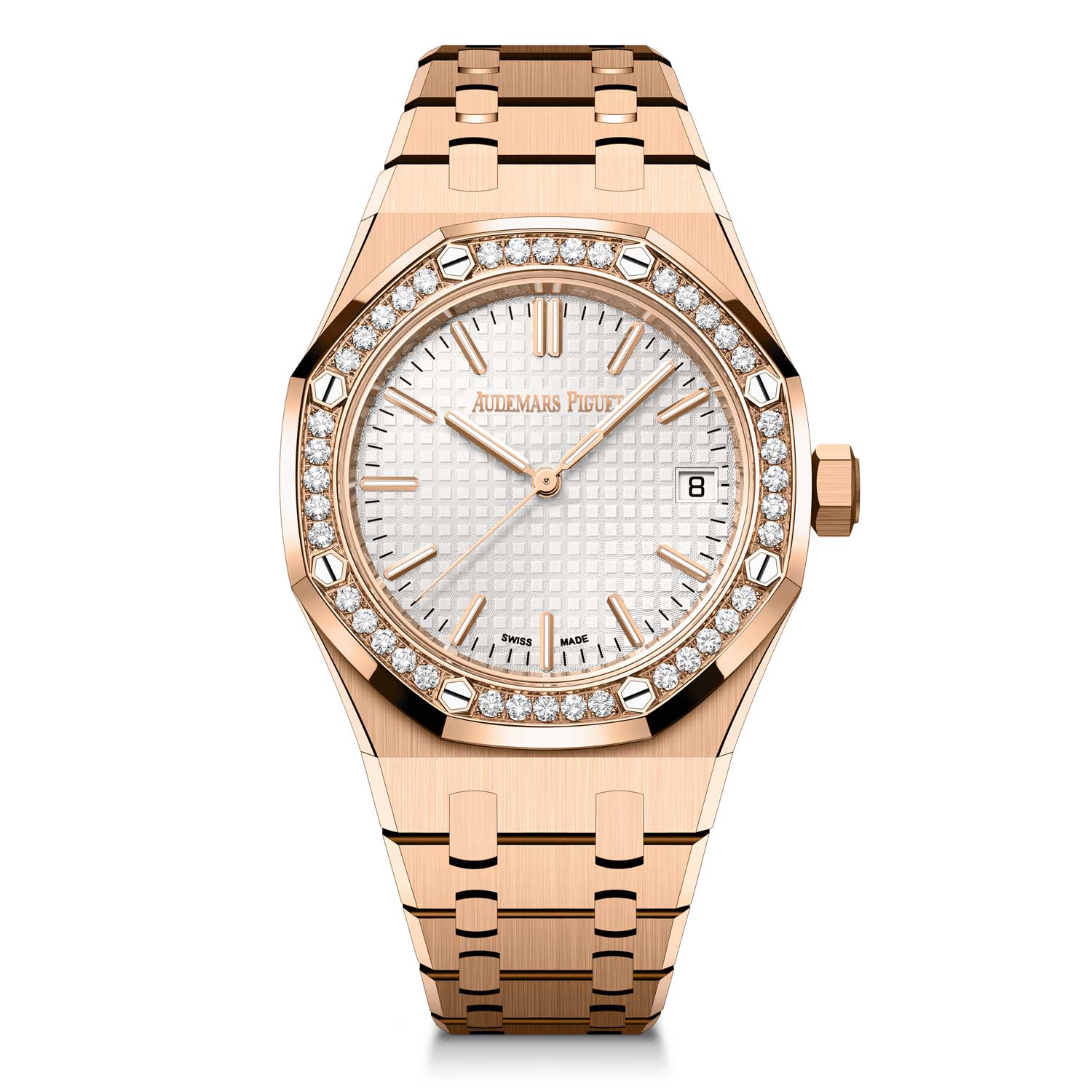
Royal Oak Selfwinding, 37 mm, Ref. 15551OR, 2022
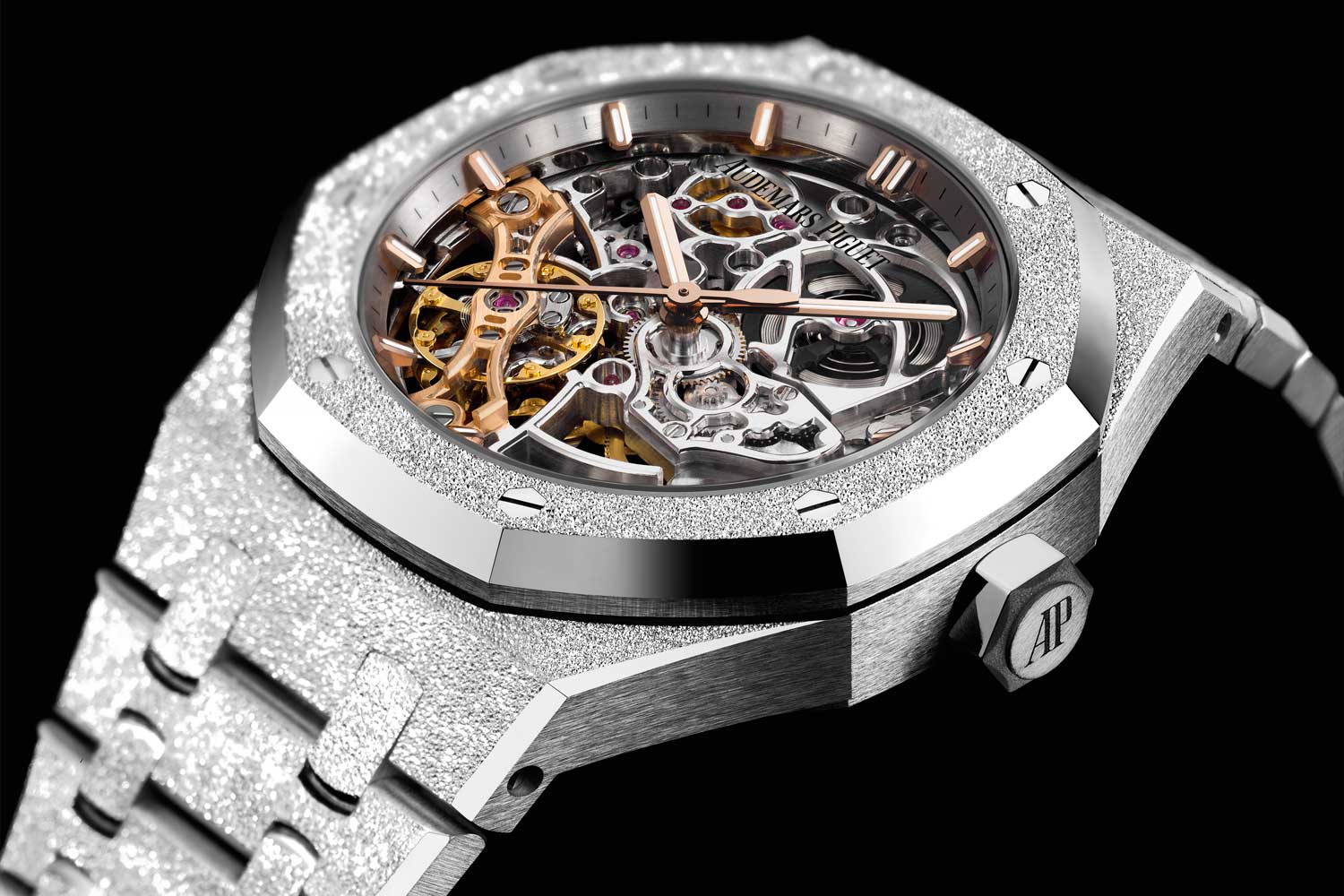
Royal Oak Double Balance Wheel Openworked, 37 mm, Ref. 15466BC, 2018
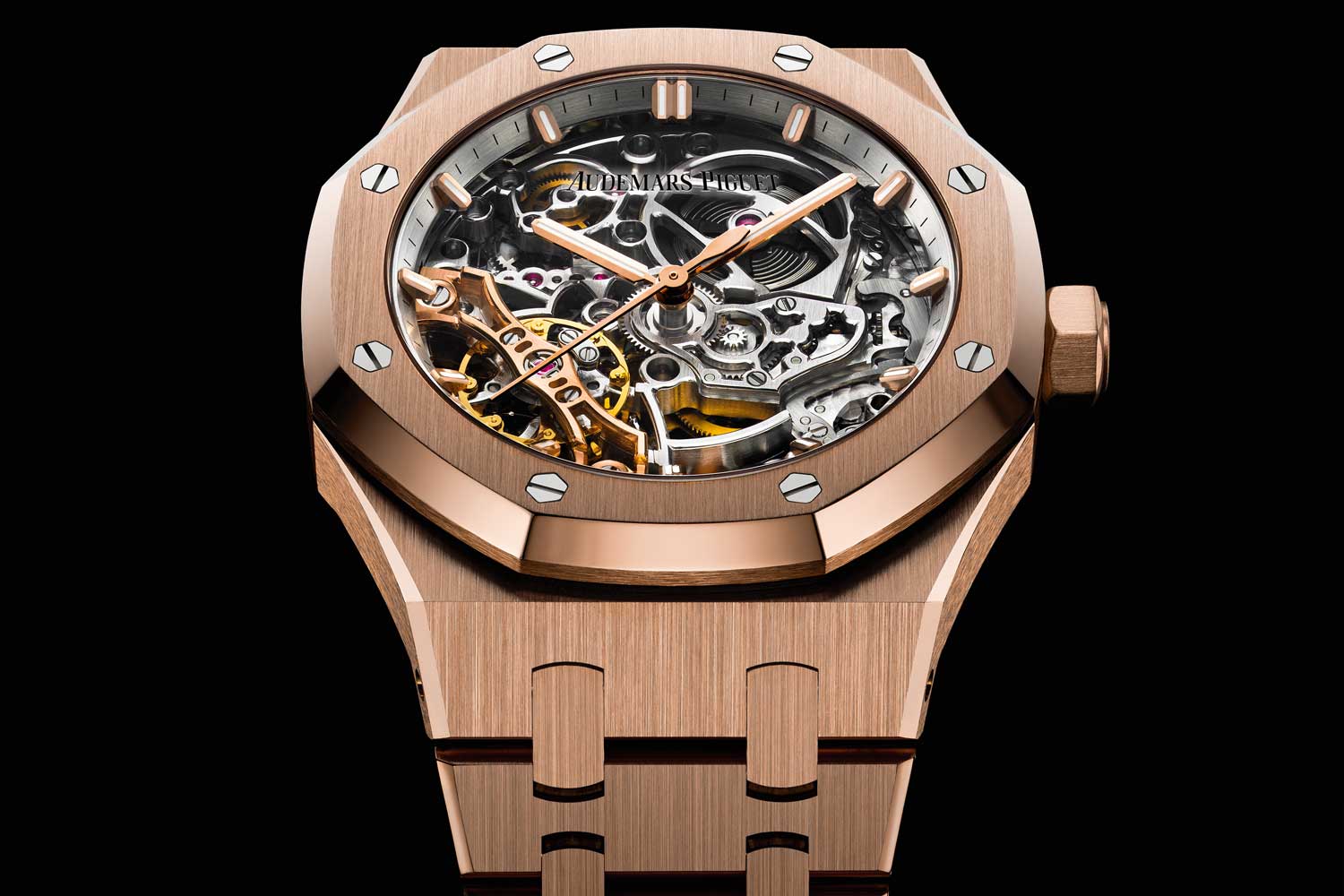
Royal Oak Double Balance Wheel Openworked, 37 mm, Ref. 15467OR, 2018
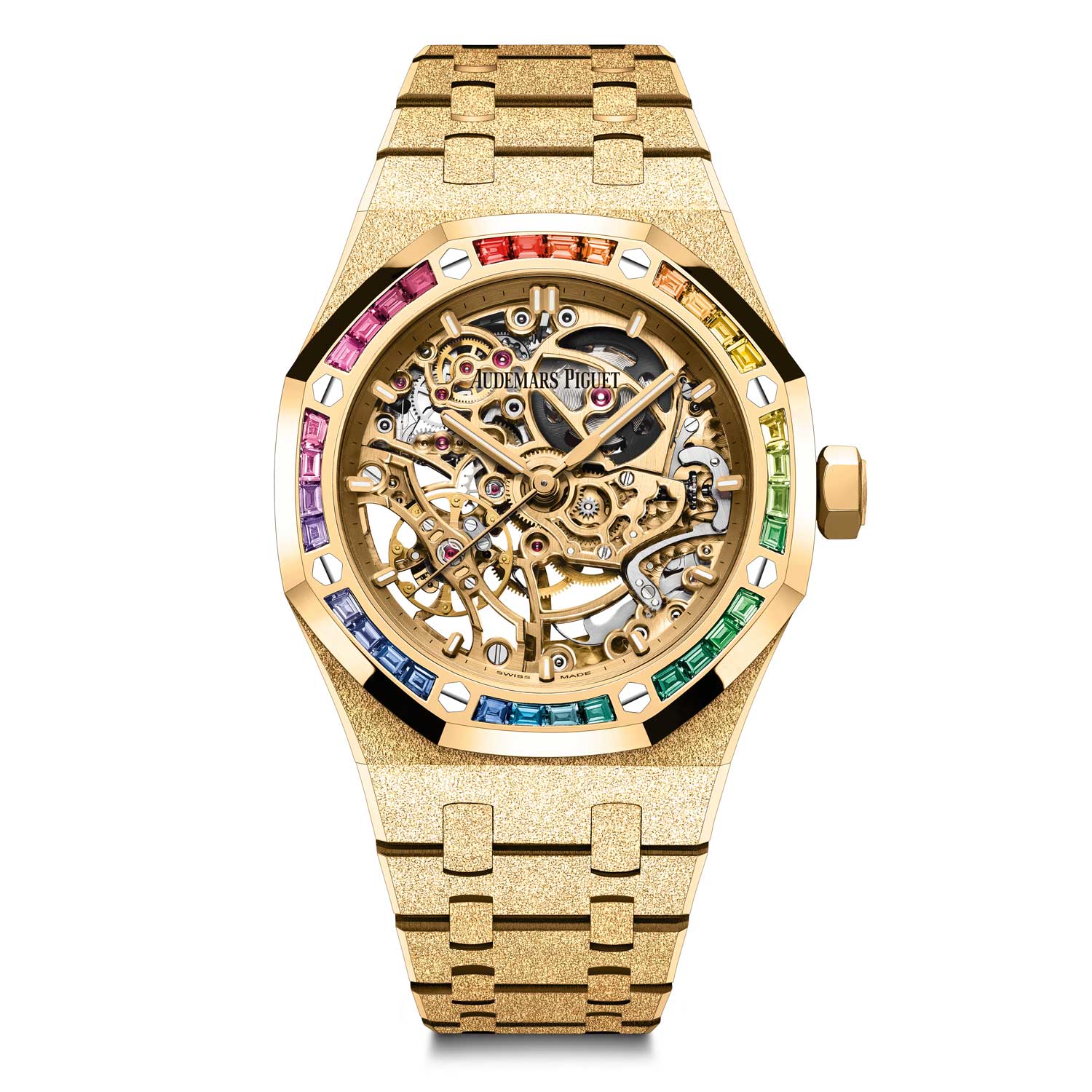
Royal Oak Frosted Gold Double Balance Openworked, 37 mm, Ref. 15468BA, 2021

Lady Royal Oak Offshore Chronograph, 37 mm, Ref. 26048SK, 2007
True Horology for Women
For those looking for the greatest avant-gardist departure from the traditional Royal Oak, I’m inclined to say all roads lead to the Royal Oak Concept Flying Tourbillon Ladies. Created in 2002 by Claude Emmenegger, the Royal Oak Concept celebrated the iconic timepiece’s 30th anniversary. It looked like a watch that time travelers had gleaned from 100 years in the future and brought back to our time, so wildly futuristic was its appearance. Its design featured a more sculptural and faceted case made from a lightweight high corrosion resistant cobalt-based alloy named Alacrite. In 2018, Audemars Piguet adapted the Concept case to create an all-new ladies’ timepiece. What is extraordinary is that this watch featured the very first flying tourbillon ever offered by Audemars Piguet, a testament to the Manufacture’s belief in creating true horological substance for their women’s watches. From a design perspective, the watch masterfully wove a multi-part dial, exposed movement and decorated bridges to create a unique sculptural horological art form, which is to my mind the most daring and ambitious women’s high complication to date. At 38.5 mm, it is not precisely for the faint of heart or diminutive of wrist, but I like to think anyone choosing to wear this incredible timepiece must be in possession of a rather extraordinary character.
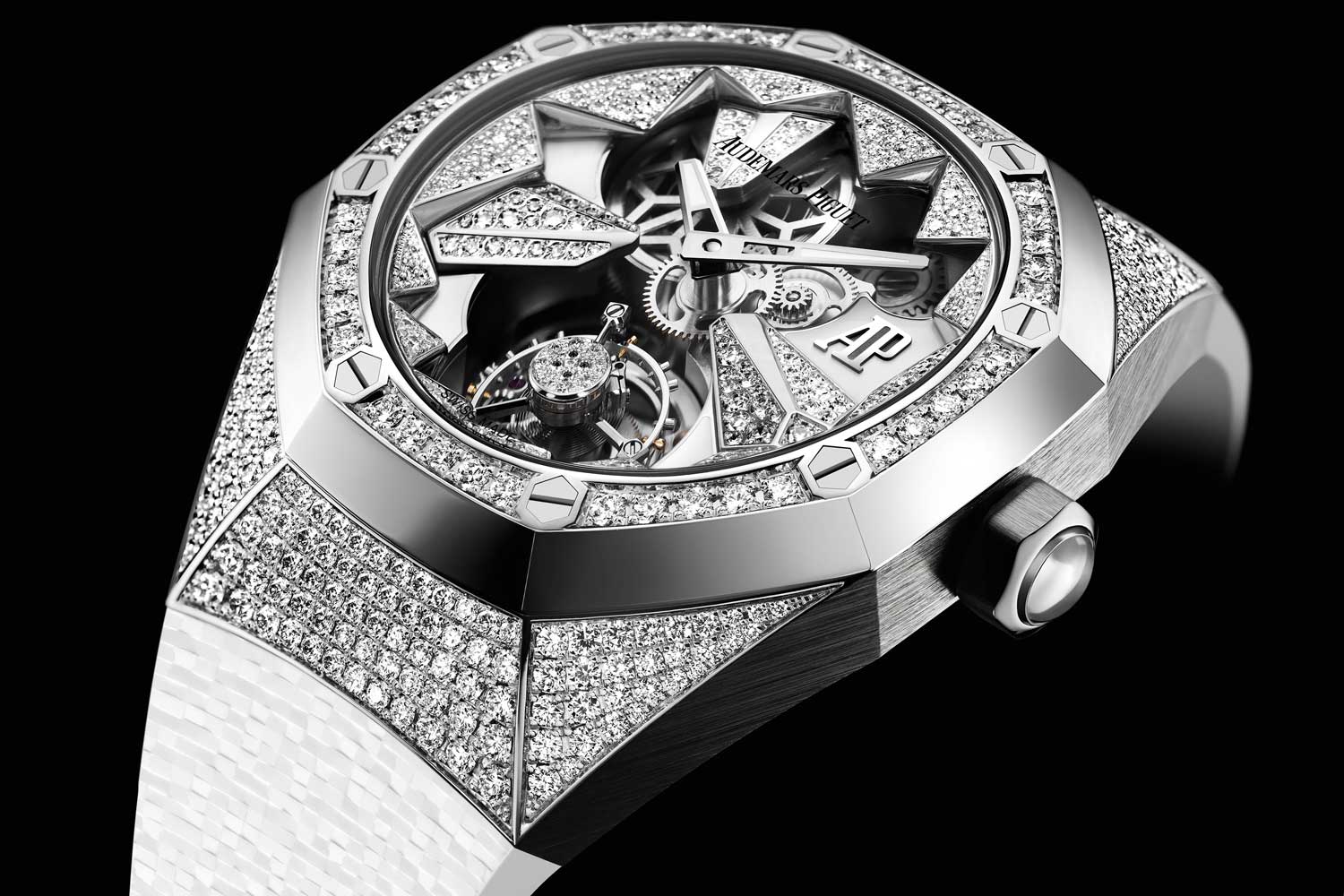
Royal Oak Concept Flying Tourbillon, 38.5 mm, Ref. 26227BC, 2018
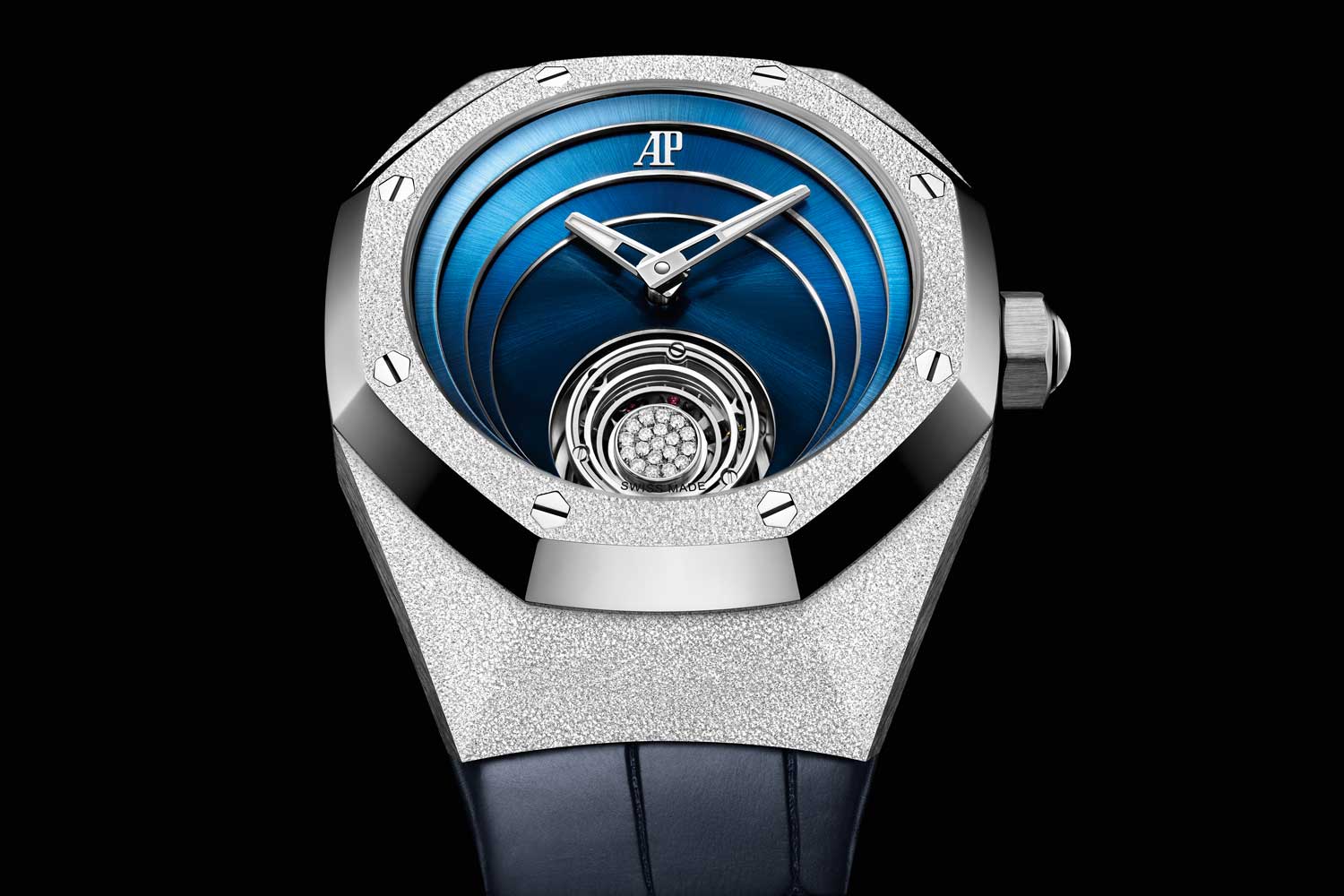
Royal Oak Concept Flying Tourbillon in Frosted Gold, 38.5 mm, Ref. 26630BC, 2020
Custodians of an Icon
There you have it, the significance of the Royal Oak in Audemars Piguet’s history of ladies’ watches as a canvas for challenging aesthetic norms around femininity and pushing all aspects of watchmaking, not just in terms of design and finishing but also mechanics, in new directions. Therefore, the Tapisserie pattern on the Royal Oak — mimetic, repetitive and unforgettable — can be said to be symbolic of a ceaseless and unbroken chain reaching back across time to the past while also stretching inexorably into the future. Each small square represents a guardian of the Royal Oak, an individual person that has worked tirelessly to uphold this beloved watch’s status and enabled its longevity through creativity, courage and determination. A great many of these people have been remarkable extraordinary women, like Jacqueline Dimier, Jasmine Audemars and Carolina Bucci. Some of them are well known to the world. Some of them are unsung heroines, who have worked tirelessly behind the scenes to ensure the Manufacture’s market leading relevance in the context of contemporary culture. When I look at a Royal Oak, the Tapisserie speaks to me like a codex, a multi-generational legacy bearing the efforts made by each member of the Audemars Piguet family to ensure that their watch is the vessel of their love and affection, so that like a child, it continues to grow and mature in the perfect way.
Even at the age of 50, it strikes me that the Royal Oak is still in its infancy. And I, for one, can’t wait to see what the next 50 years of this exceptional icon will bring to us.










